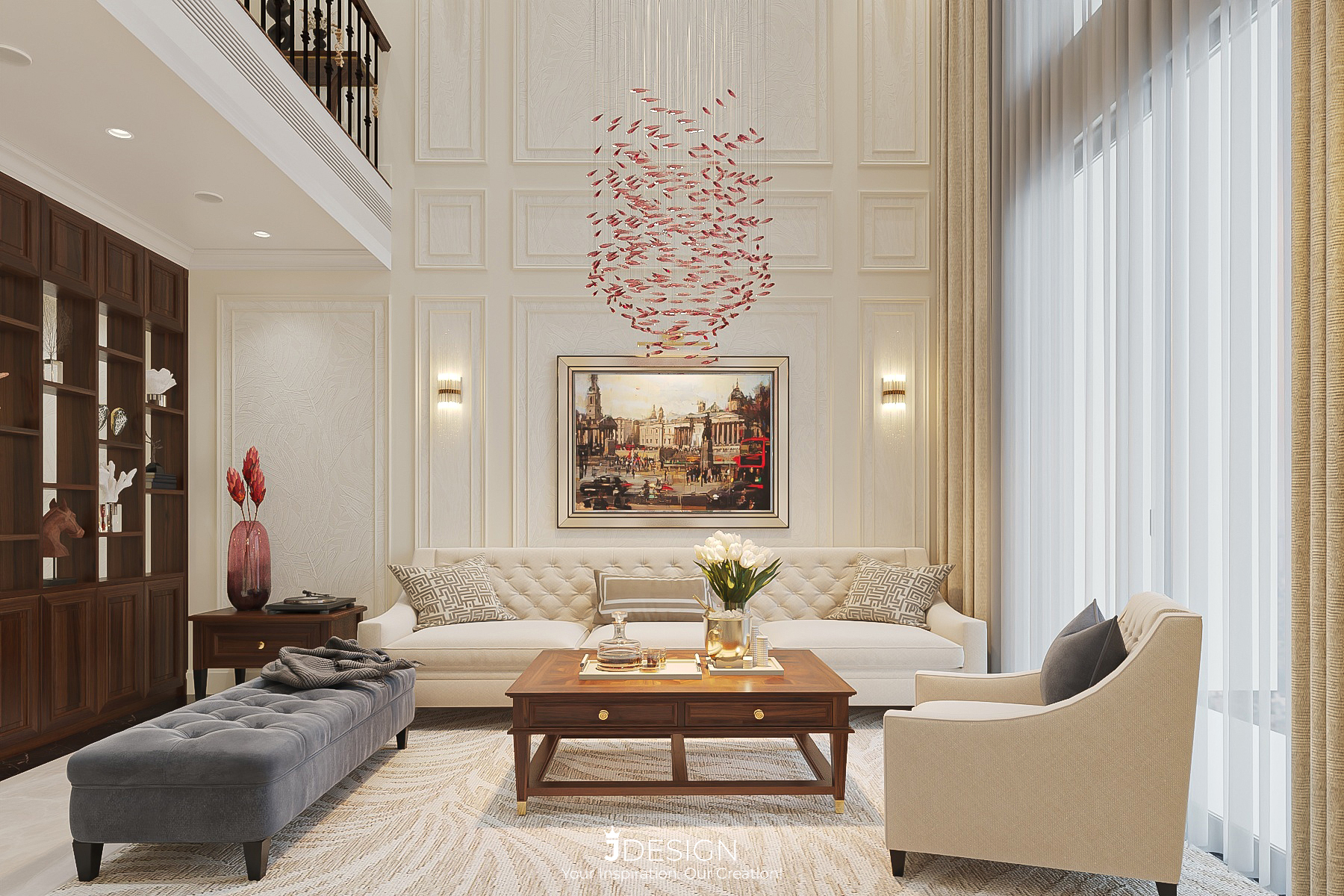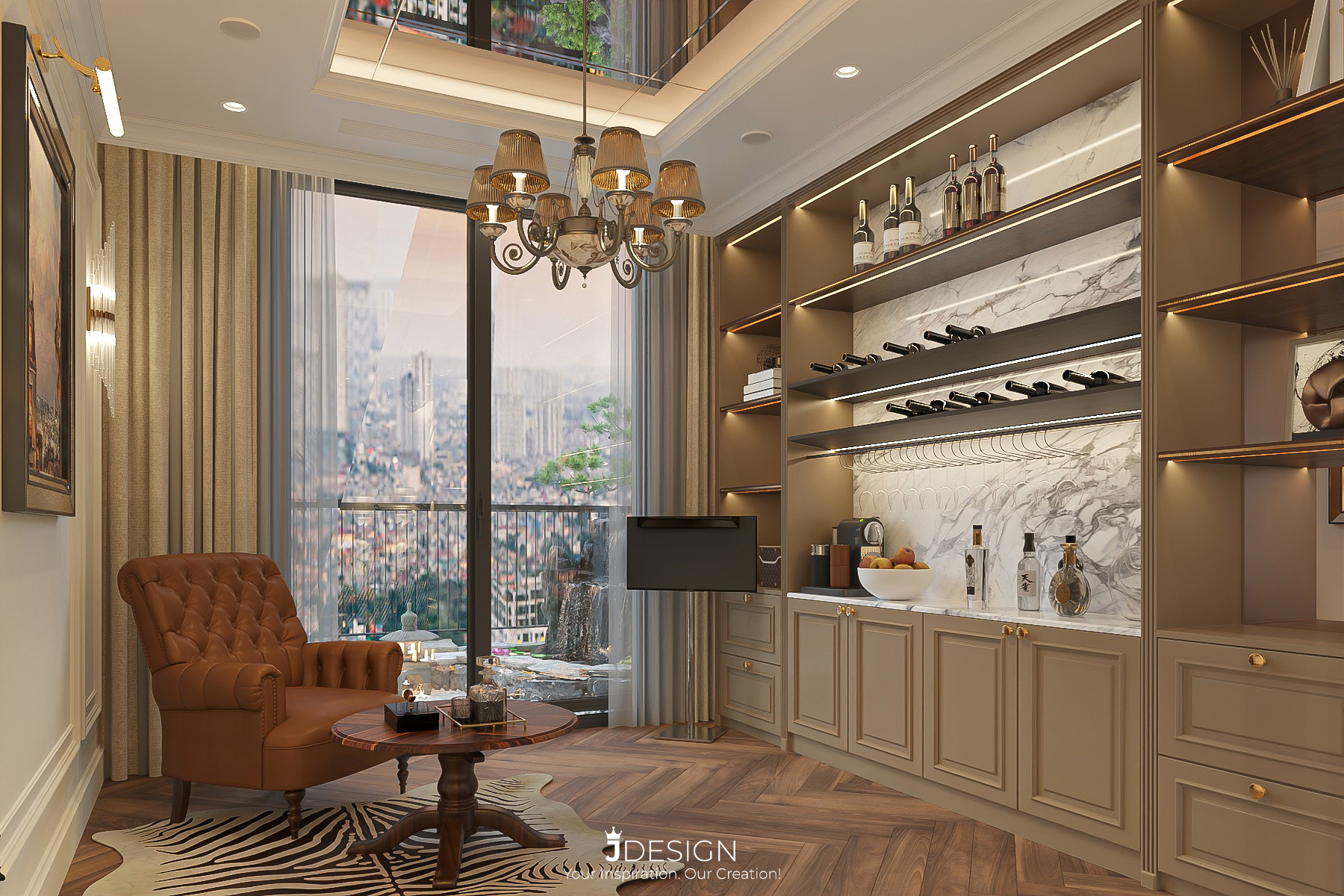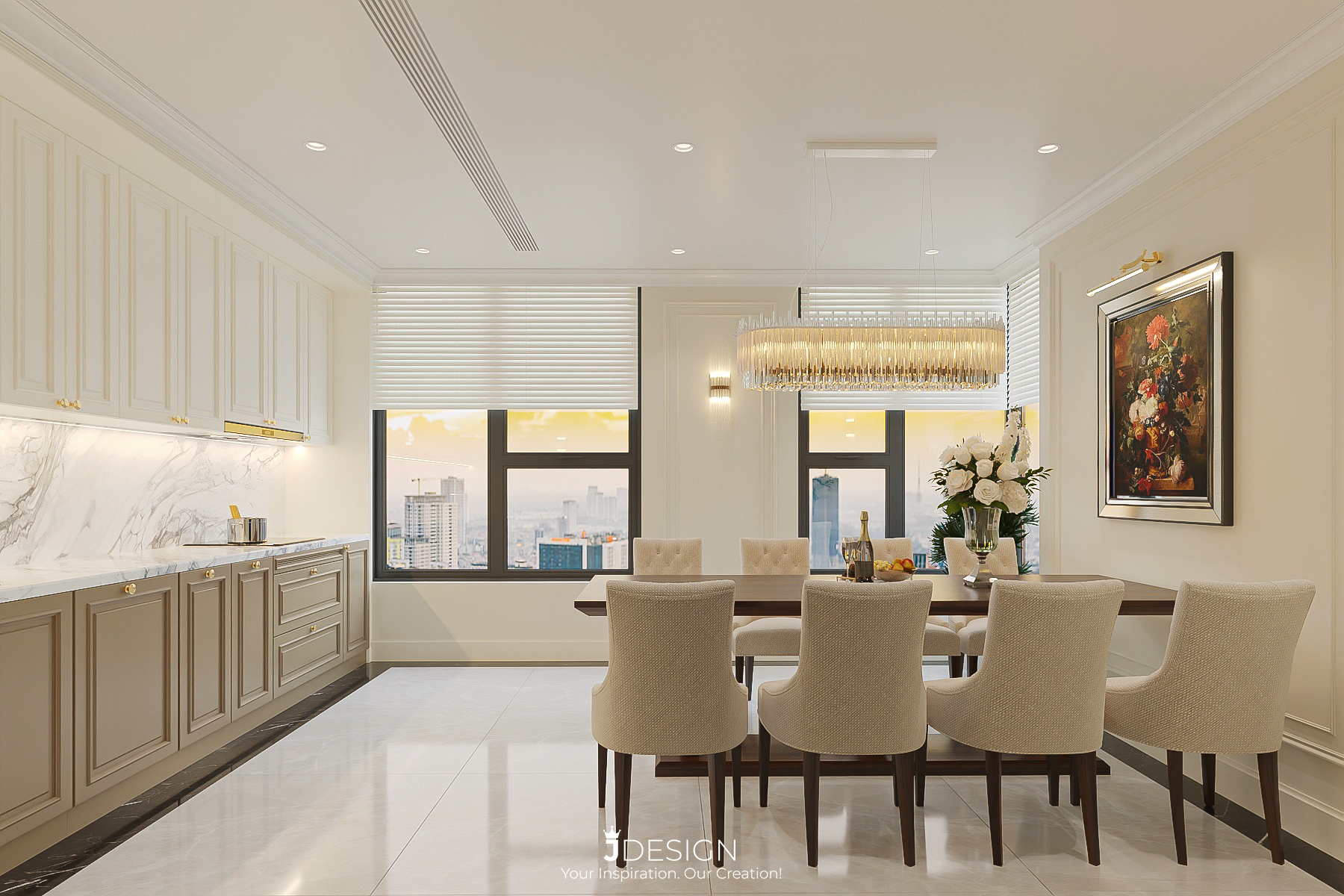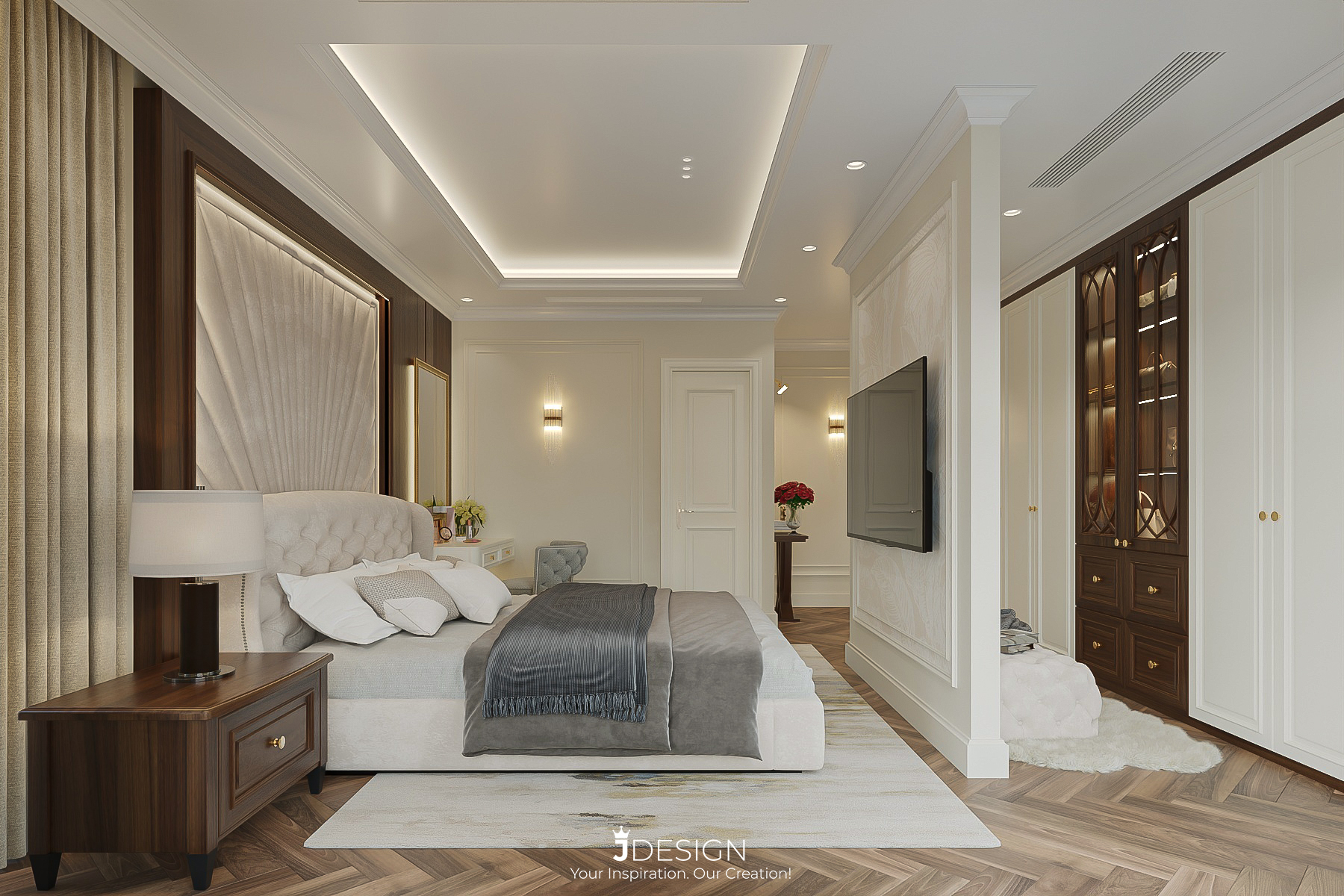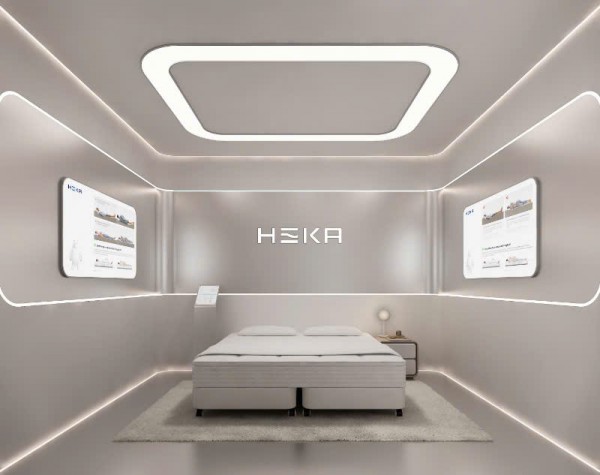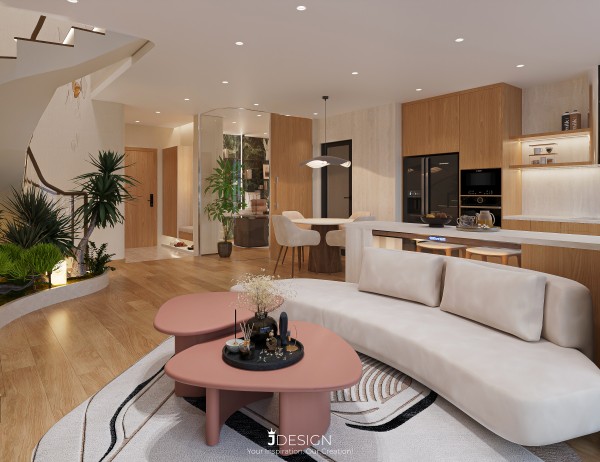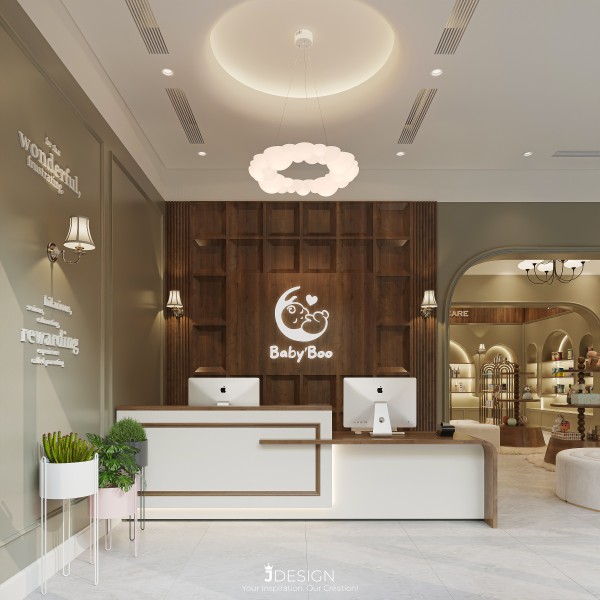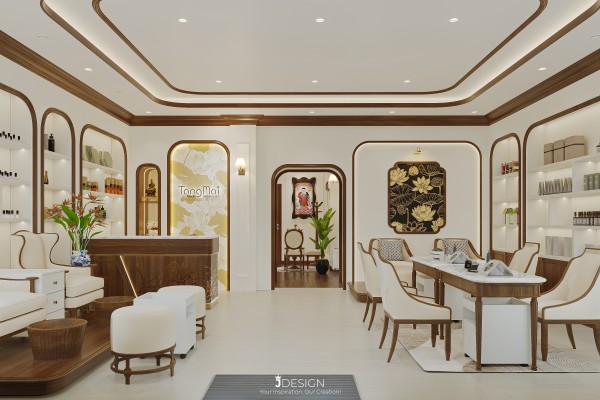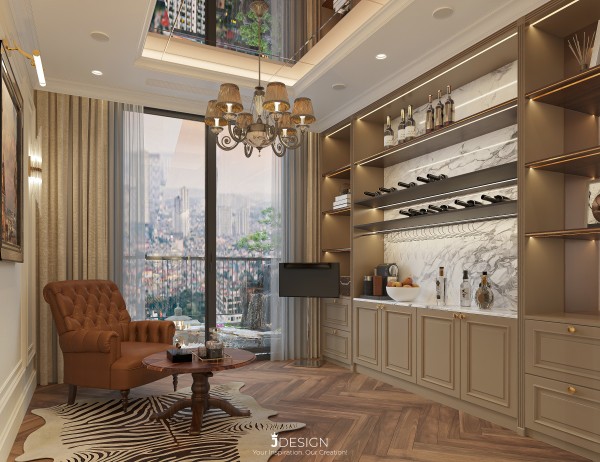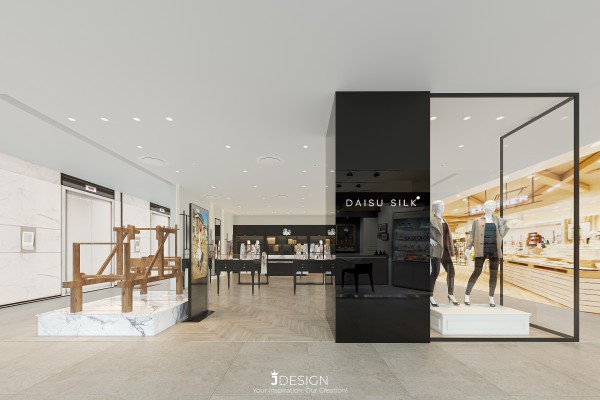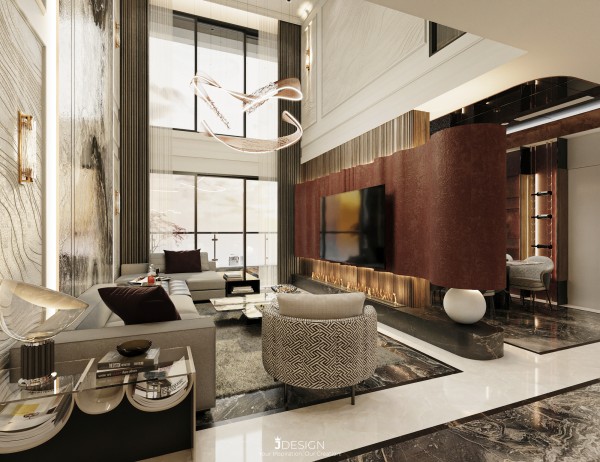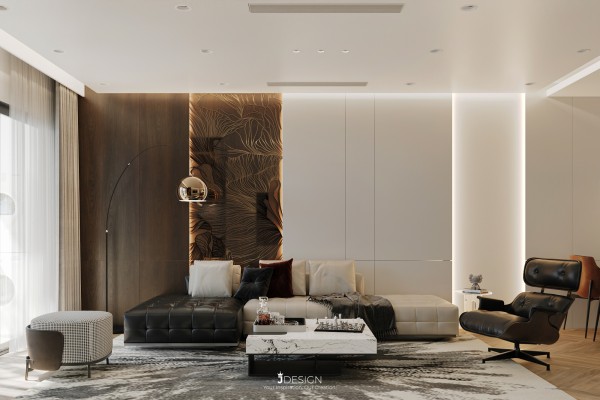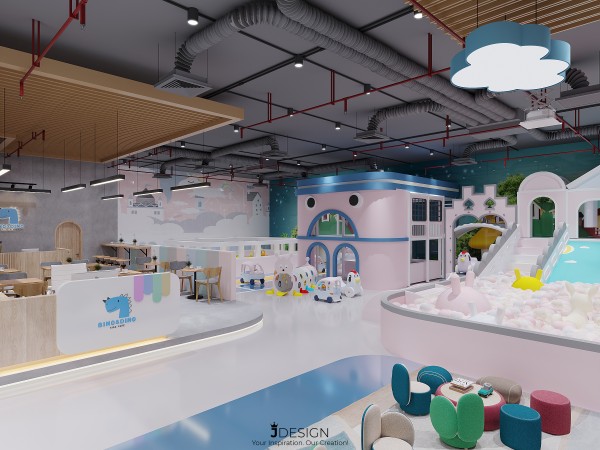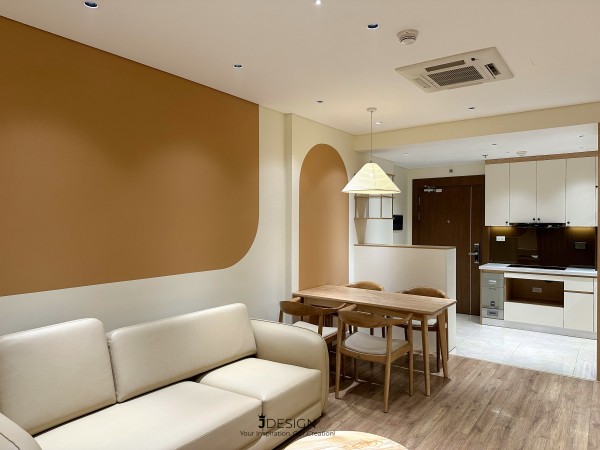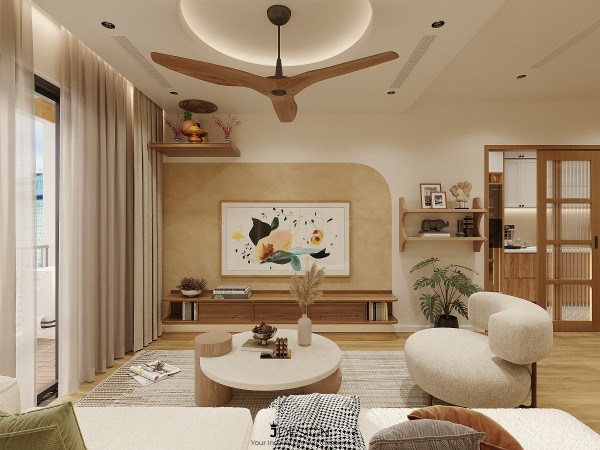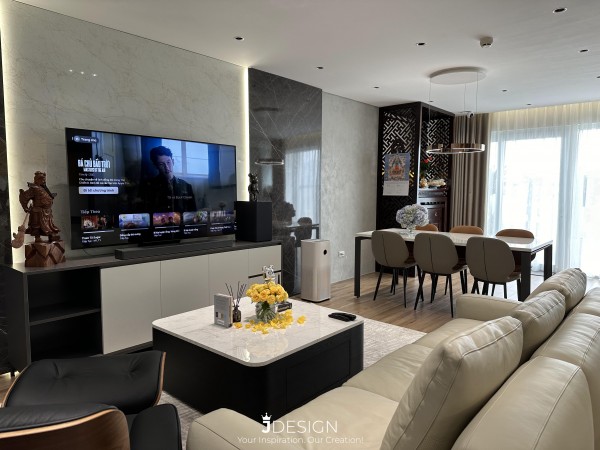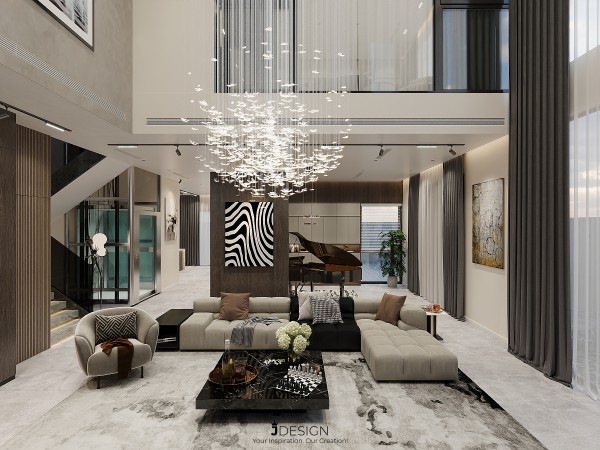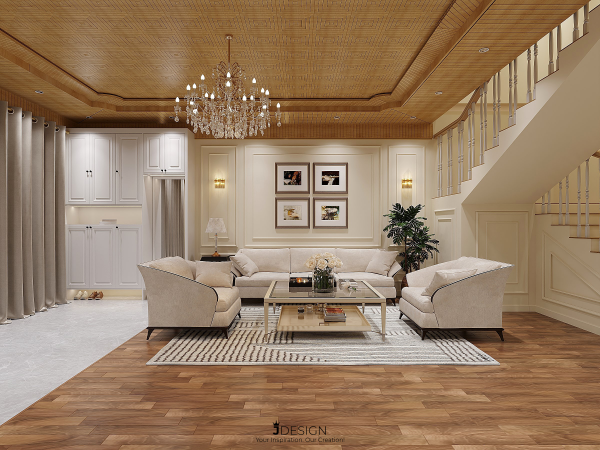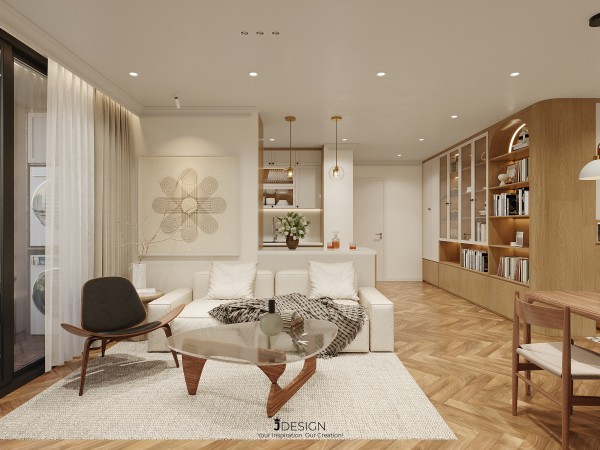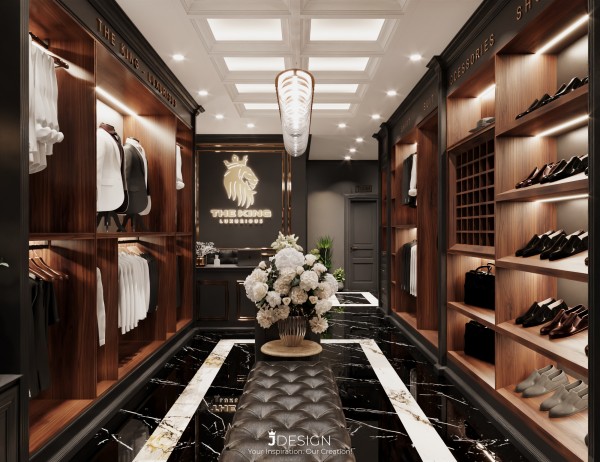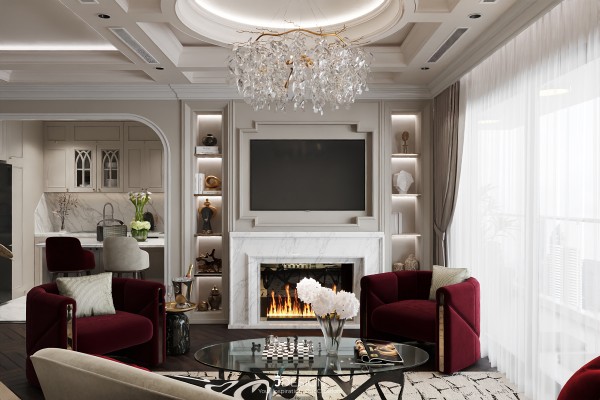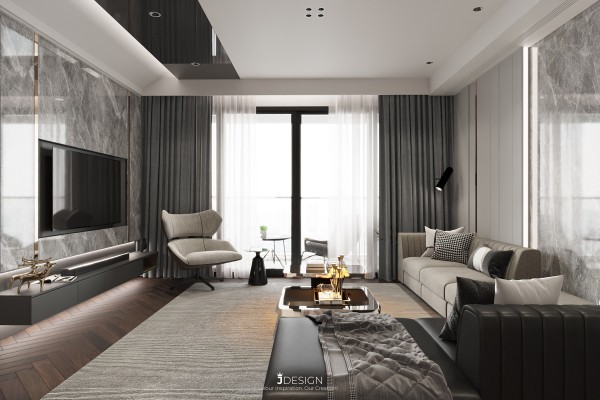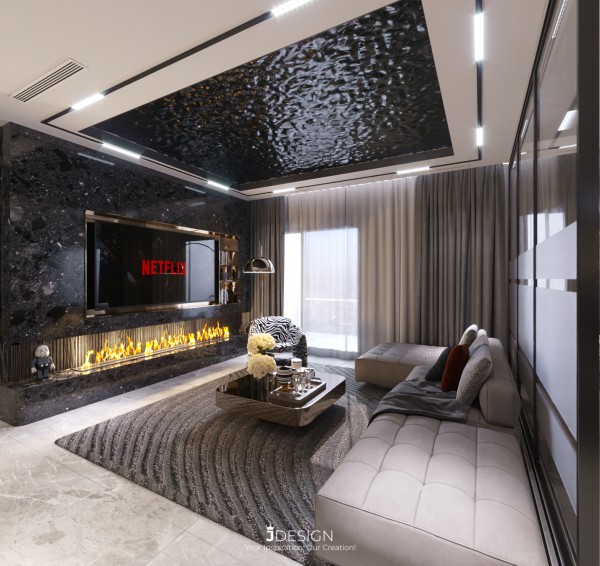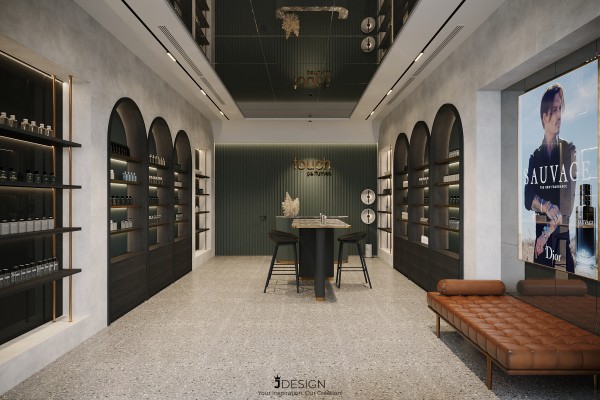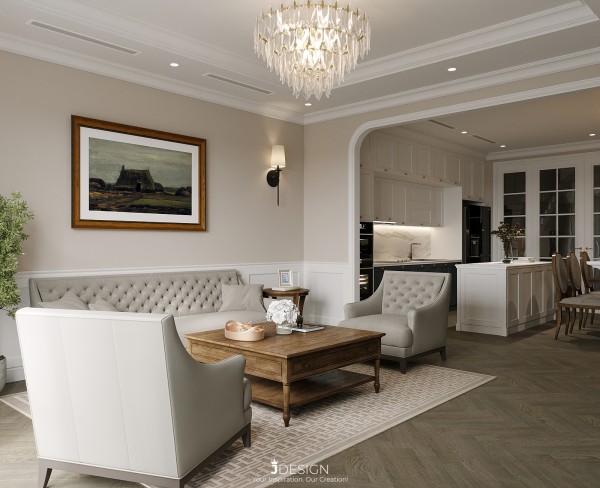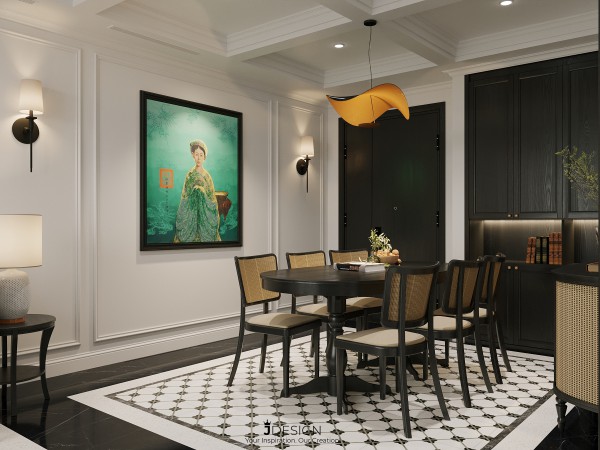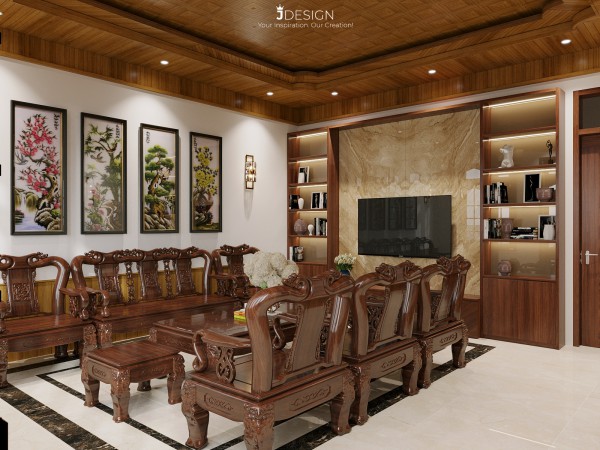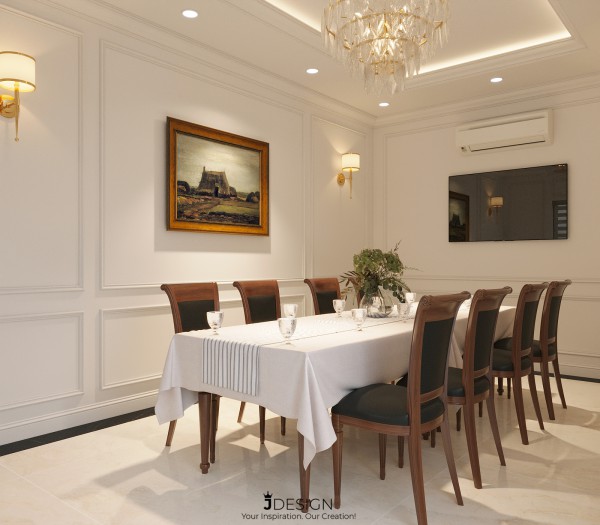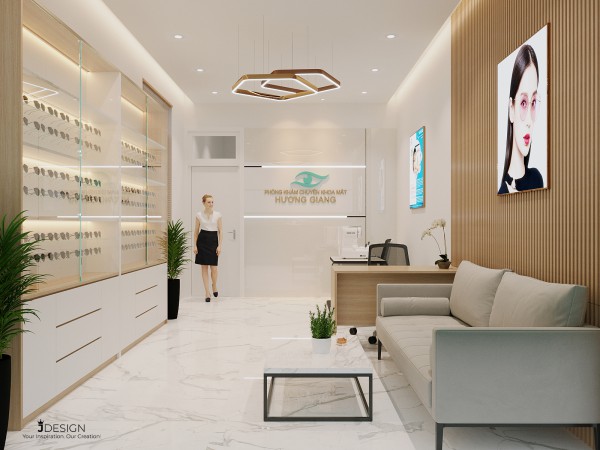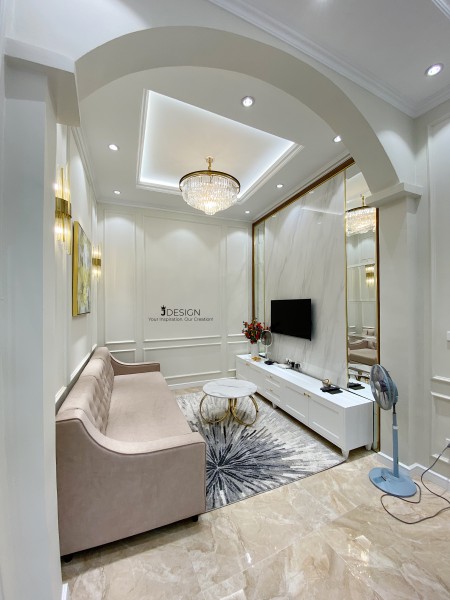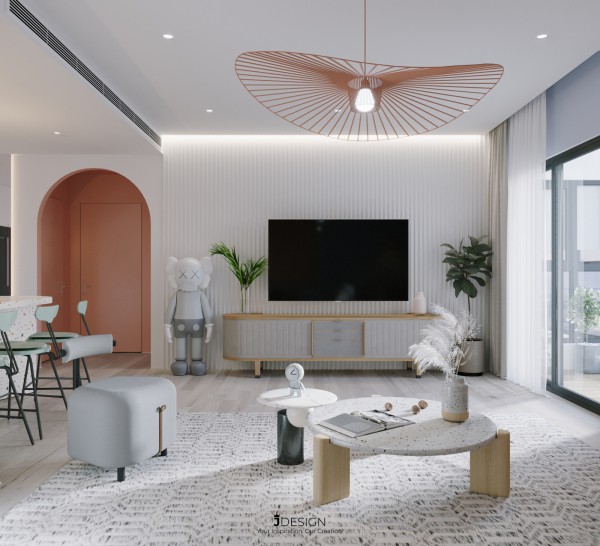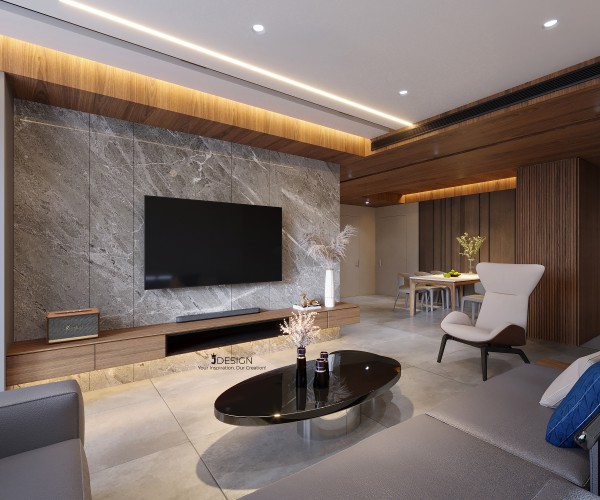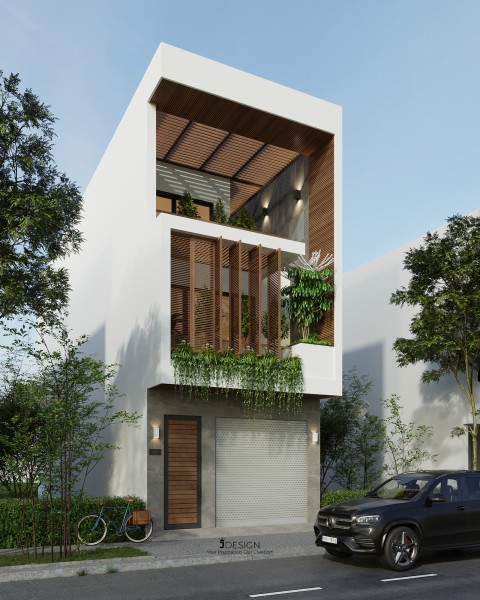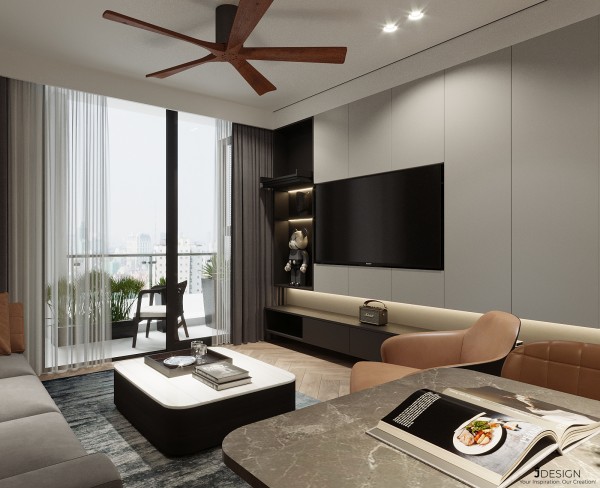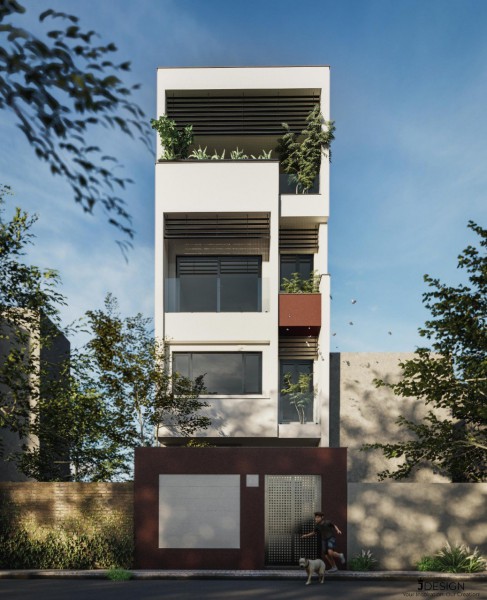SMART HOME IN THE 4.0 ERA
Smart Home is a product of the 4.0 industrial revolution, aiming to bring many utilities to help improve the quality of people's lives.
So let's find out what is the Smart House? What popular tools and features do they include and what are their future development directions? Please follow the article below from JDesign Co., LTD to better understand Smart Home!
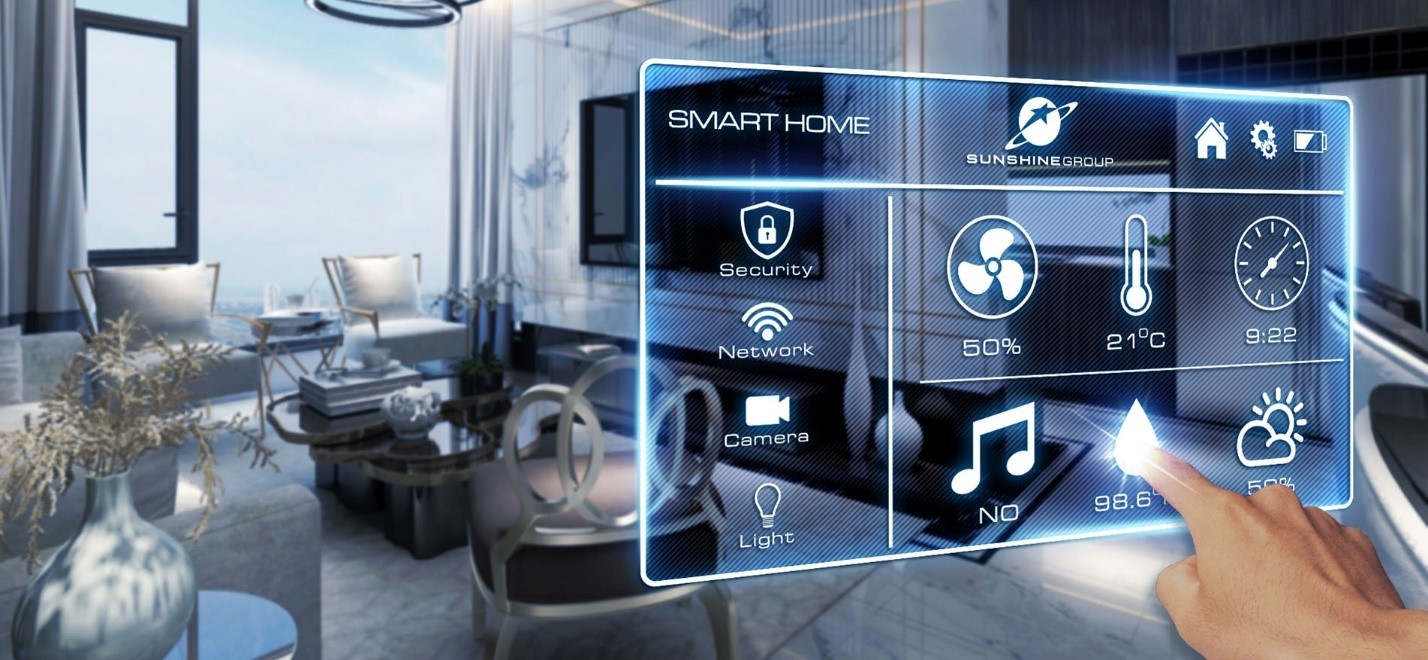
I. Definition:
Smart Home can be understood as a type of house, space, architecture, interior designed, applied and installed with smart electronic appliances and devices that can be controlled and connected automatically from a distance by connecting the Internet.
Currently, Smart Home Systems are divided into 2 types:
- Wired smart home
- Wireless smart home
However, in the Vietnamese market, we mainly focus on the wireless Smart Home segment because of the convenience and high aesthetics.
II. Structure & Operating principle:
1. Structure:
A basic smart House, Space, Architecture, and Interior will include the following main components:
- Control center: This is considered the control brain of the house, responsible for connecting devices together and controlling the entire home system.
- Smart sensor system: Includes many types of sensors installed indoors, in many locations to collect information and data as a basis for the processing center to work: infrared sensors, temperature sensors. humidity, temperature,...
- System of electronic devices: These are terminal devices responsible for the main task of serving people in daily life (LED lights, automatic locks, televisions,...)
2. Operating principle:
Smart homes operate based on the principle: "Input orders - Process - Execute". Specifically, it will be explained as follows:
Input:
- User interaction: Users can send commands through interfaces such as mobile apps, console or voice.
- Data collection: Sensors in Smart Homes such as motion sensors, temperature sensors, and other devices collect information about the environment.
Processing:
- Data processing: Data is transferred to the control center, where it is processed by artificial intelligence or smart computers.
- Decision making: Based on the information collected, the control center makes decisions about taking specific actions. For example, if a motion sensor detects a presence, the hub can decide to turn on the lights.
Execution:
- Send control signals: The control center sends control signals to smart home devices, such as lights, fans, and other devices. Signal transmission is performed between computers, devices, and other devices. devices together through popular connections such as: Internet Protocol (IP), Zigbee,...
- Take action: Devices receive signals and perform corresponding actions. For example, if an on signal is received, the light will be turned on.
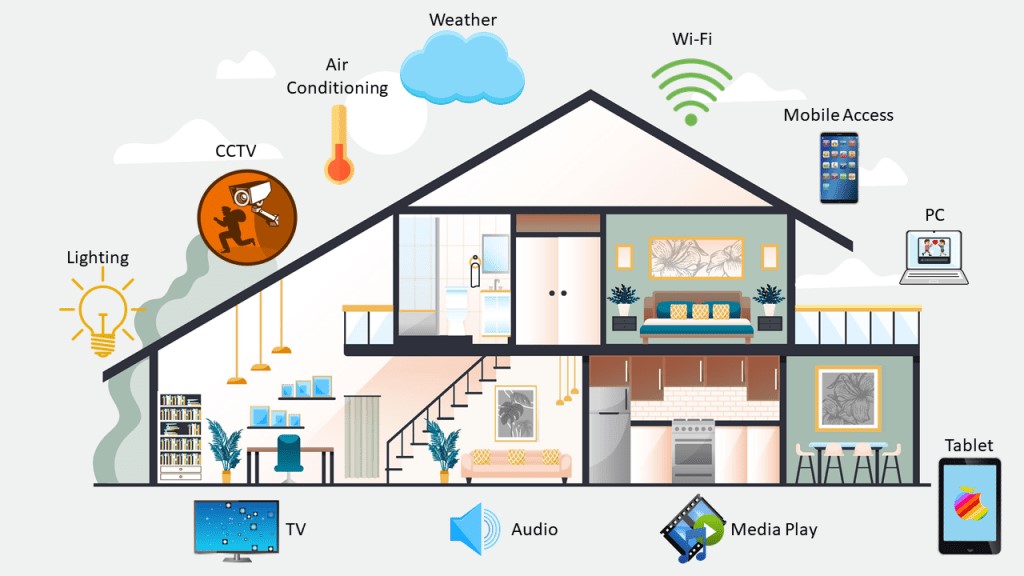
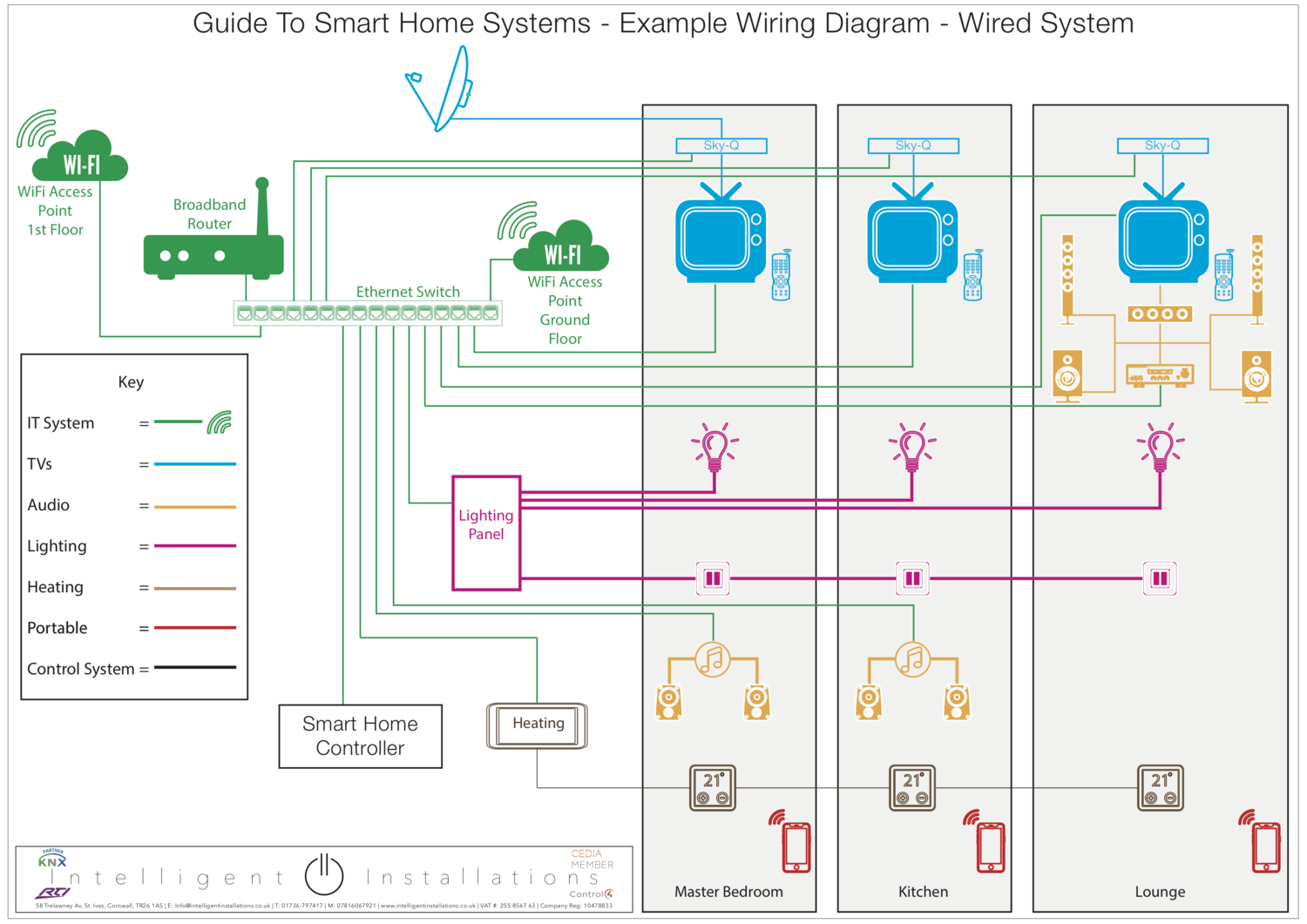
III. Popular Smart Home Functions & Applications:
Smart Home applications are widely popular not only in the Housing sector but also applied extremely flexibly in most other spaces such as: Offices, Restaurants. , Hotel, Public area,...
1. Smart Switch and Socket system:
1.1. Light:
- The ability to turn on/off light switches remotely via mobile phone enhances security and convenience.
- Automatic timer and scheduling for light bulbs brings convenience and saves time for users.
- Adjust light intensity or color by voice with the support of virtual assistants.
- Equipped with a light sensor feature to help save electricity and optimize user experience
- Combines with other smart devices, such as motion sensors and security systems. For example, automatically opening the door, automatically turning on the light when someone passes by the hallway,...
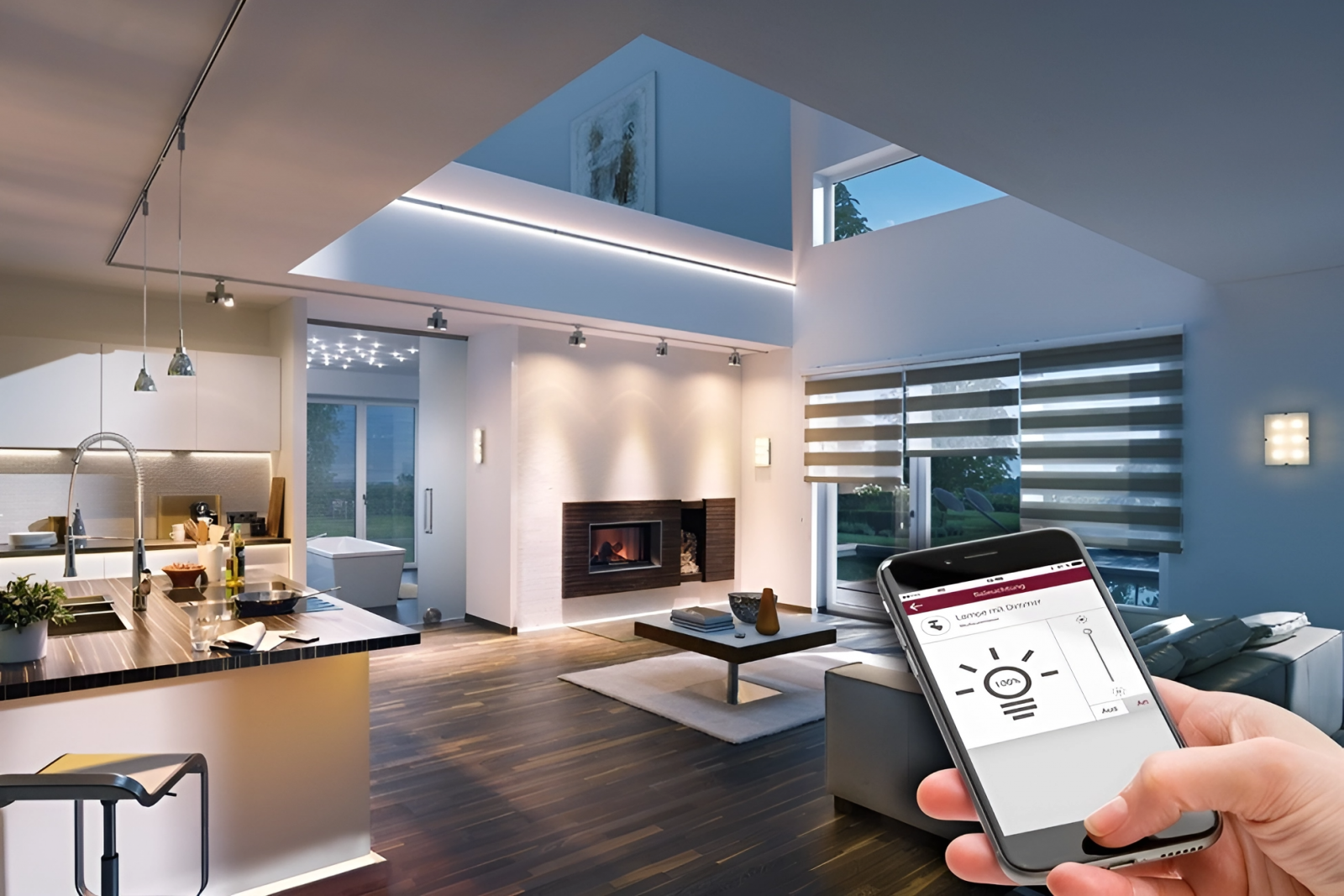
1.2. Curtain:
- Control the opening/closing of windows remotely via your phone or a smart control panel.
- Schedule doors to automatically open and close at specific times, helping to optimize natural light.
- Voice control through virtual assistants such as Google Assistant, Amazon Alexa or Apple Siri.
- Equipped with a light sensor to automatically adjust door opening/closing to save energy.
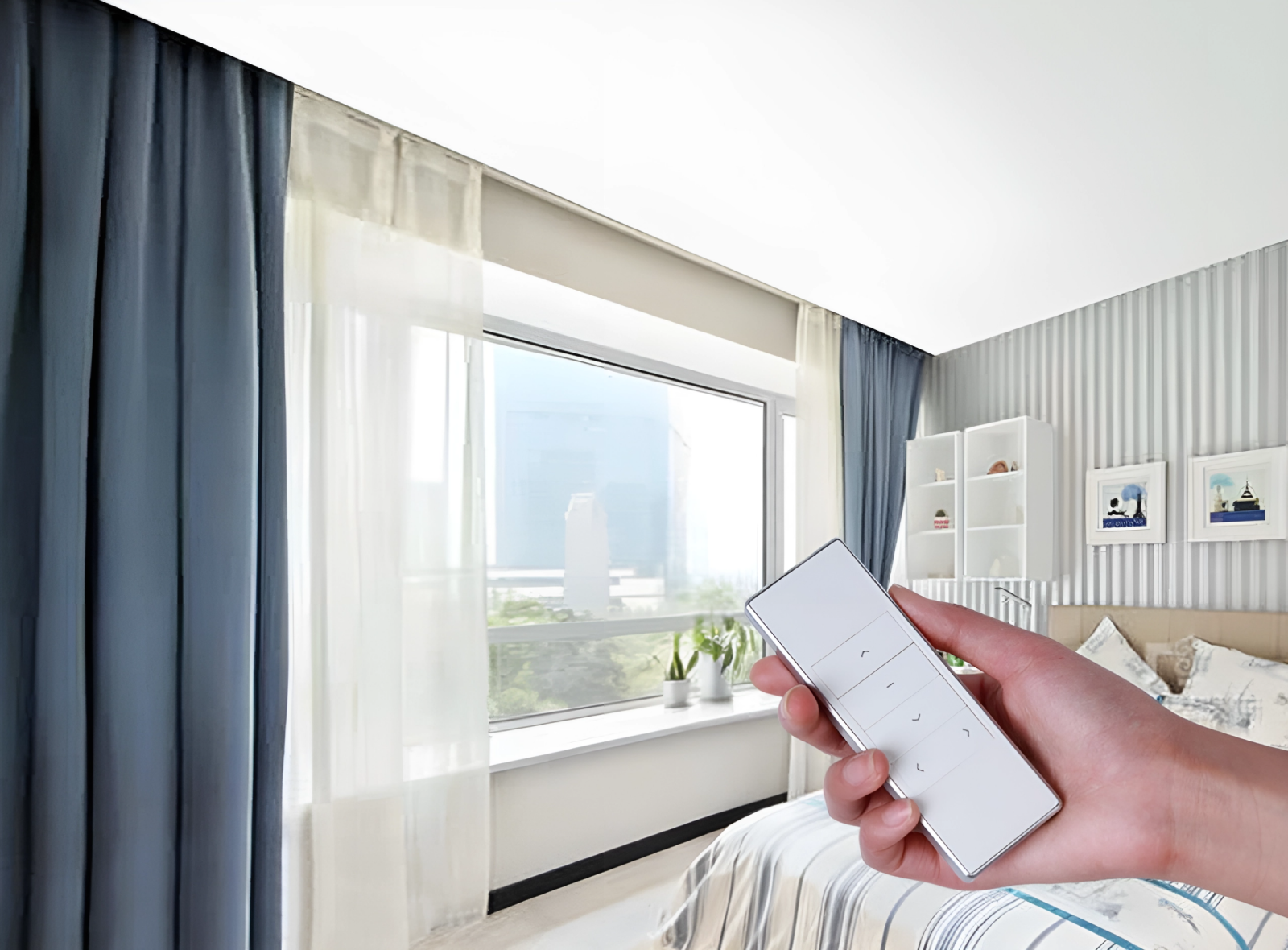
1.3. Air conditioner:
- Remote control of air conditioner through mobile application on phone.
- Set up activity schedules for the entire day and week, helping to optimize energy usage and create a stable environment over time.
- Compatible with virtual assistants such as Amazon Alexa, Google Assistant or Apple HomeKit, allowing users to control air conditioning by voice.
- Equipped with temperature, humidity, and light sensors to automatically adjust temperature based on environmental conditions.
- Smart features such as automatic shutdown when no one is home or automatic temperature adjustment to optimize energy savings.
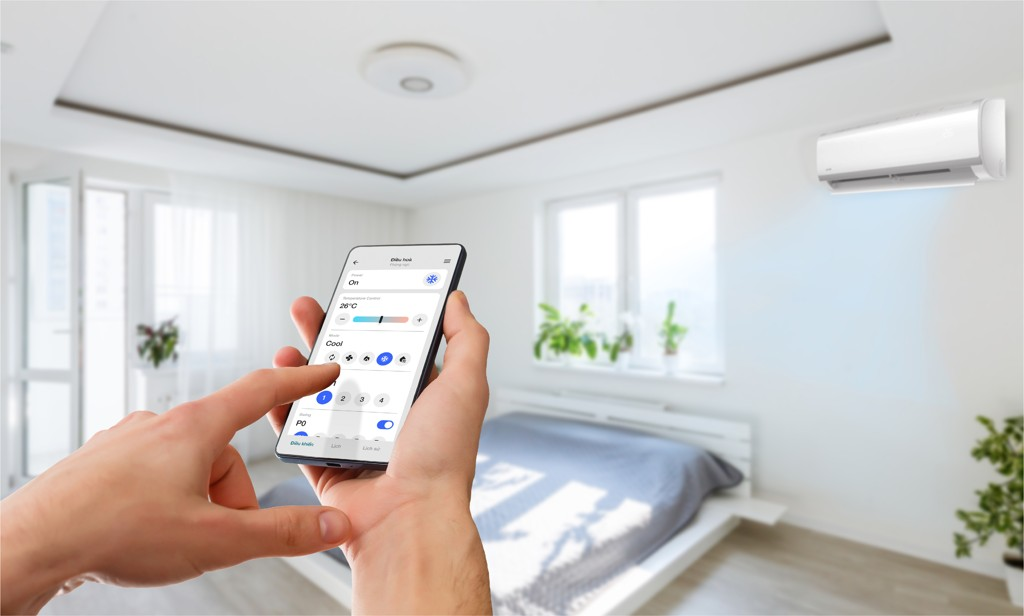
1.4. Hot water heater:
- Turn on/off the water heater switch even when far away through the application on the phone, extremely convenient.
- Set a timer to automatically turn on/off or adjust water temperature at specific intervals, helping to save energy and reduce waste.
- Equipped with a temperature sensor to help the system recognize when the water has reached the desired temperature and automatically turn off to avoid wasting energy.
- Integrates virtual assistants Google Assistant, Amazon Alexa, Siri allowing users to control by voice.
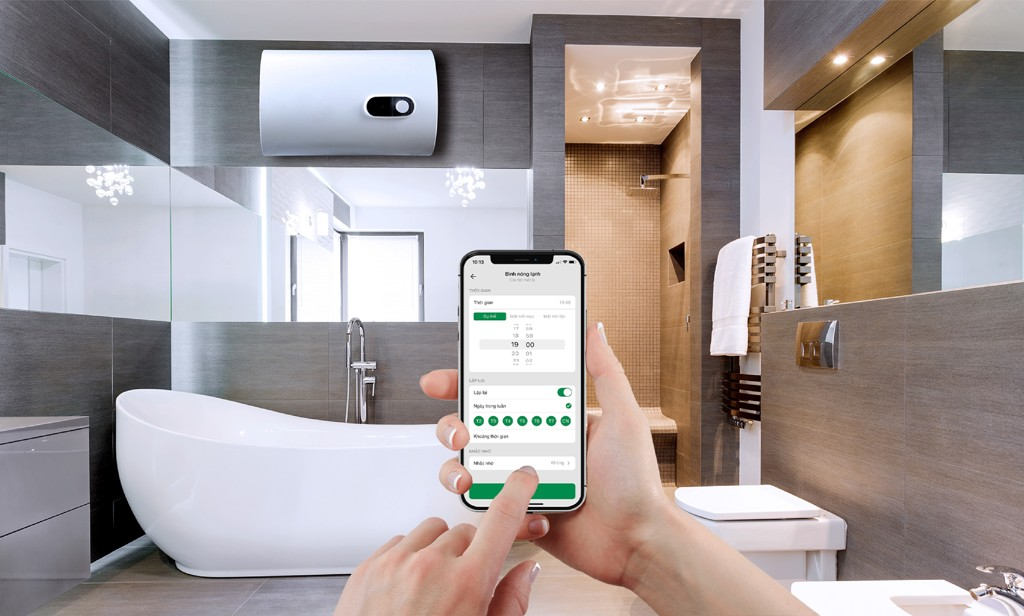
2. Security control system:
2.1. Security Camera (IP Camera):
- Supports regular monitoring 24/24h, providing full images and videos to help monitor and check any area in the home/company with just a smartphone or some other technology device. like TV, computer,...
- Surveillance IP cameras support the use of infrared lights, allowing users to monitor at night or in places with low light
- IP cameras also have an anti-theft alarm feature, divided into 2 types: alarm via text message in the camera software and alarm by direct call via remote phone.
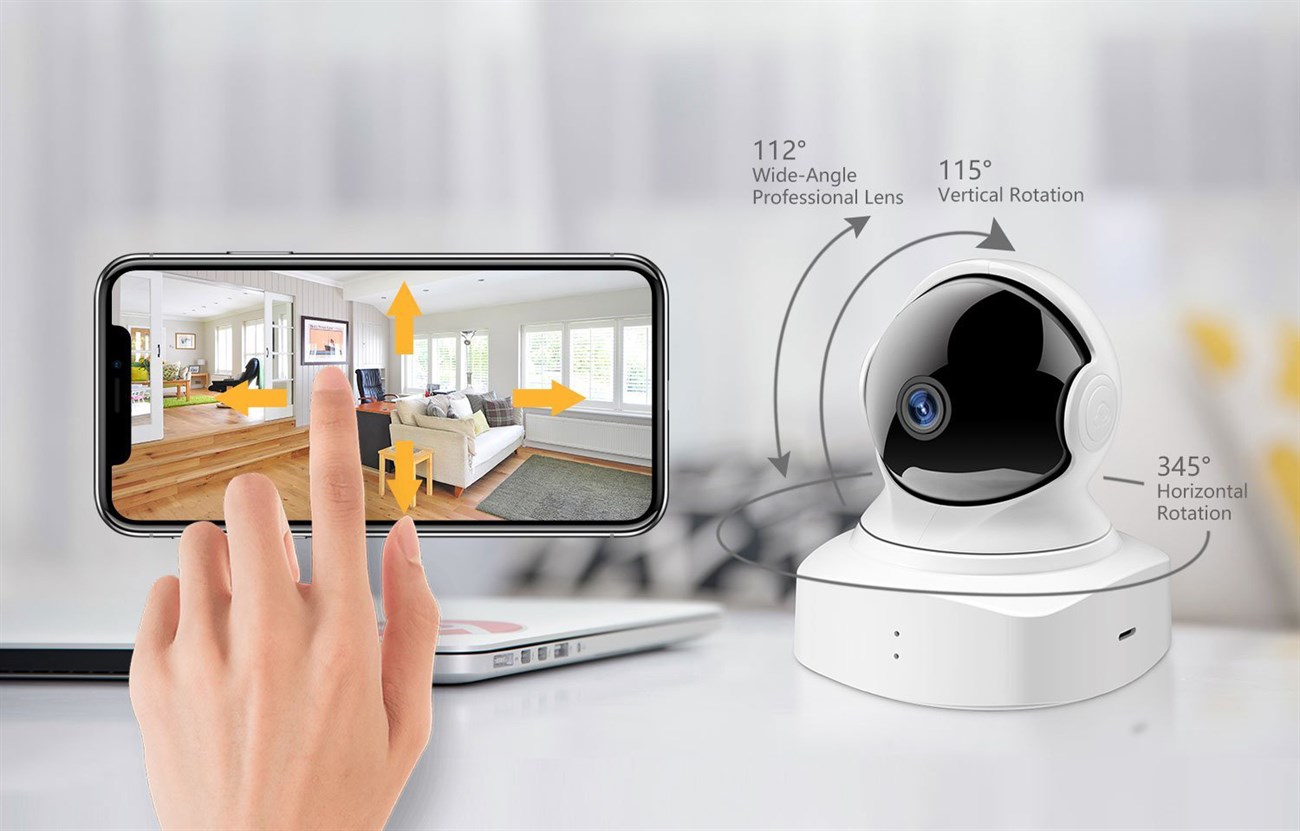
2.2. Smart Door lock:
- Equipped with modern unlocking technology with many different modes, unlocking with: password, magnetic card, fingerprint, smartphone, mechanical key.
- Sensor feature when someone comes to the door, and then notifies the homeowner via phone.
- Store access history, helping homeowners keep track of who opened the door and when.
- Temporary access can be shared with others, for example friends or babysitters, without having to provide a physical key.
- Play an anti-theft warning sound when detecting that the lock has been broken, and immediately send a message to the homeowner's phone.
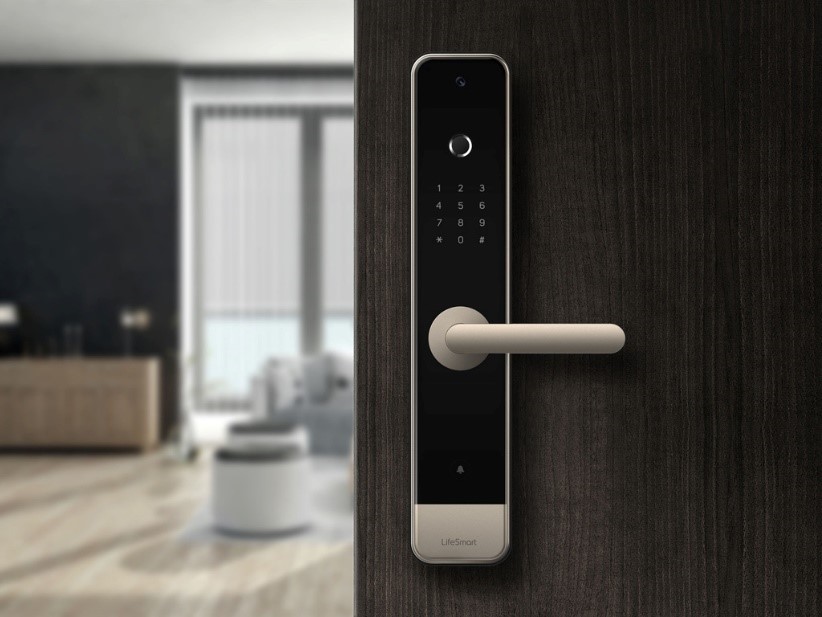
2.3. Smoke detector:
- Identify and detect smoke to identify early signs of fire and provide immediate warnings, helping family and property avoid danger.
- Allows combination with other smart devices to increase alarm efficiency. For example, when an incident is detected, the LED light will turn on, activate the watering system, automatically open the door, etc. to help people quickly handle the situation or escape.
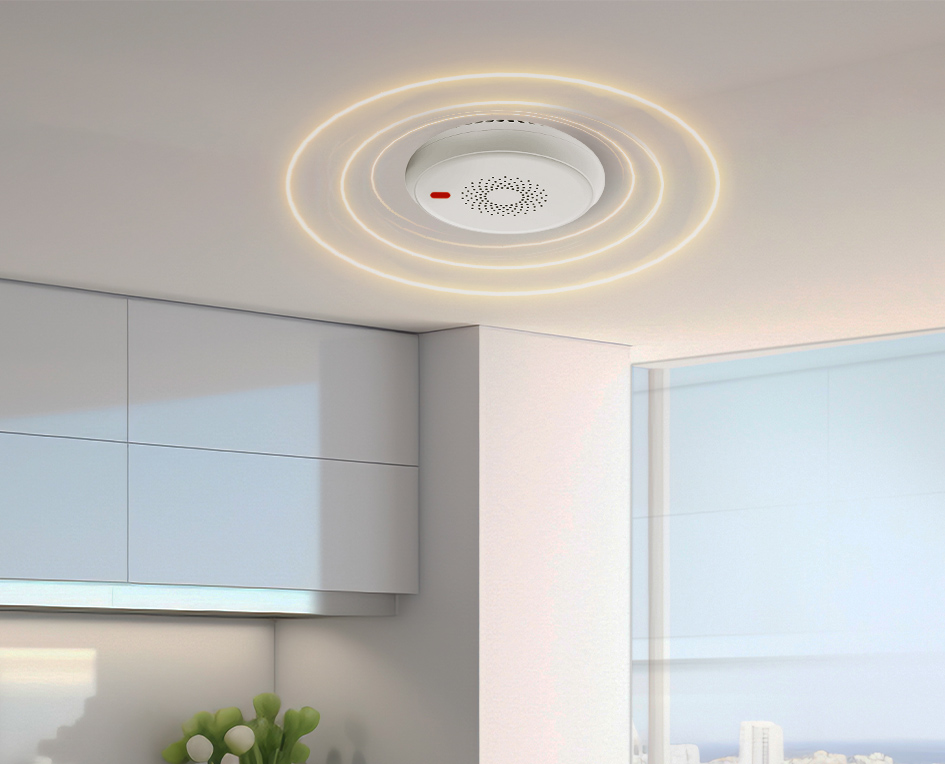
2.4. Smart door sensor:
- When the door opens or closes, the smart door sensor will be activated to serve people and help save energy. For example, when you go out and close the door, the lights will turn off and the curtains will automatically close,...
- Smart door sensors possess security features that allow users to monitor the door opening and closing status of the entire house.
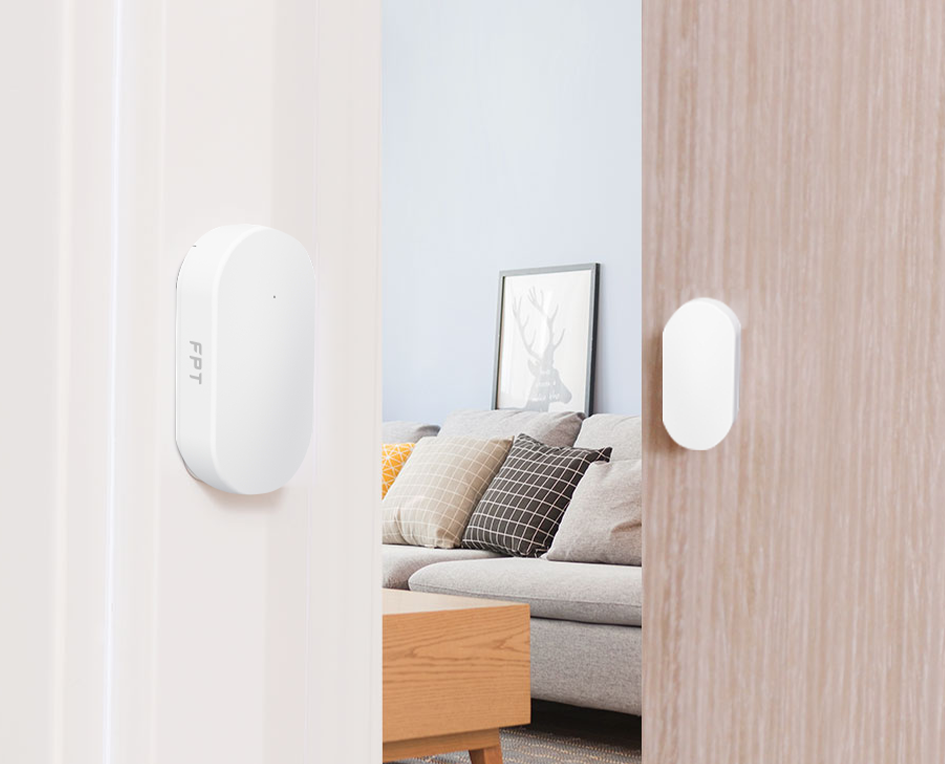
2.5. Motion Sensor:
- Detect unusual physical movements in the installed area and immediately send warnings to the homeowner's Smartphone, at the same time send signals and activate related devices in the system according to the established context. available.
- With the support of smart sensors in the home, the family both increases vigilance and protects safety in certain situations.
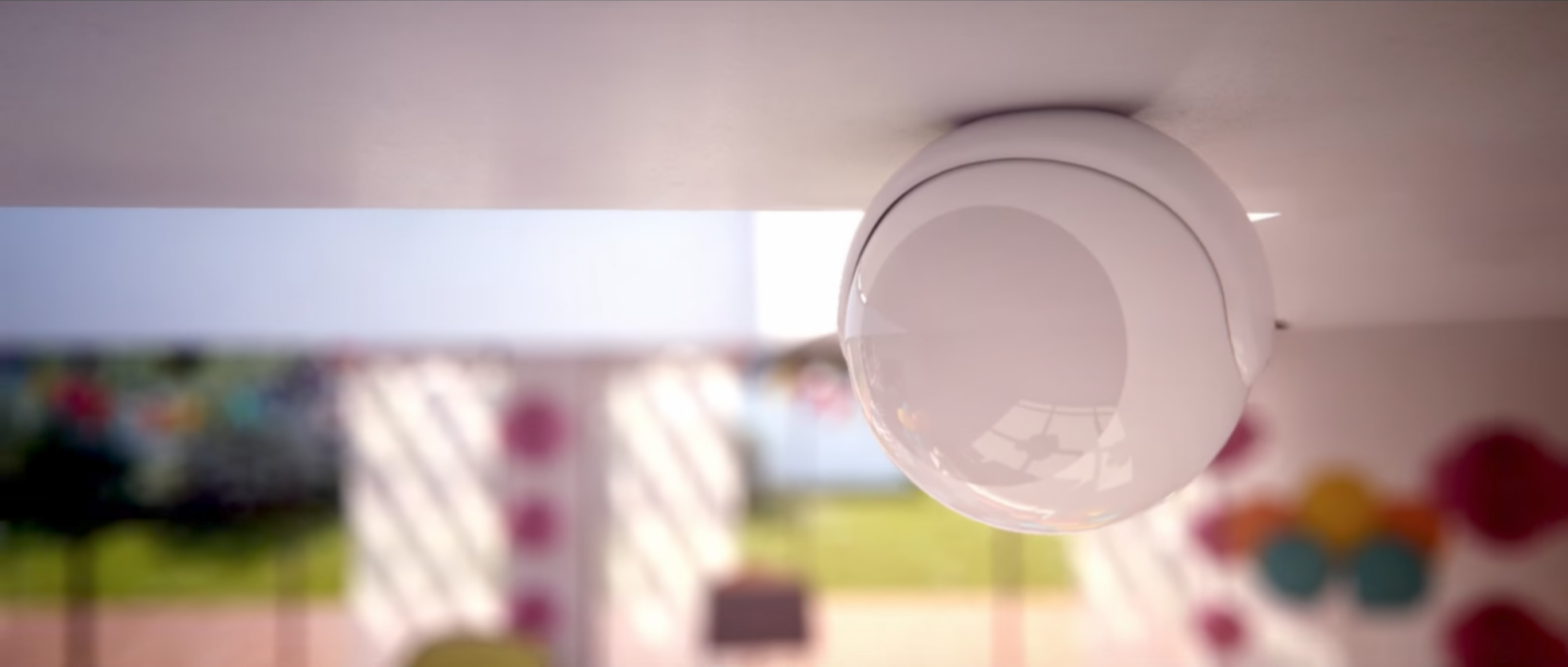
3. Multimedia entertainment system:
3.1. Multi-zone, Multi-channel sound system:
- Remote control of the sound system via Smartphone, allowing flexibility in selecting songs, adjusting volume, and even managing different sound zones from anywhere.
- The system supports voice commands, helping users easily control and change music.
- The system has the ability to connect to a variety of TVs and other speaker systems, taking advantage of the power of the speaker network and providing an extremely vivid sound experience when watching movies or listening to music.
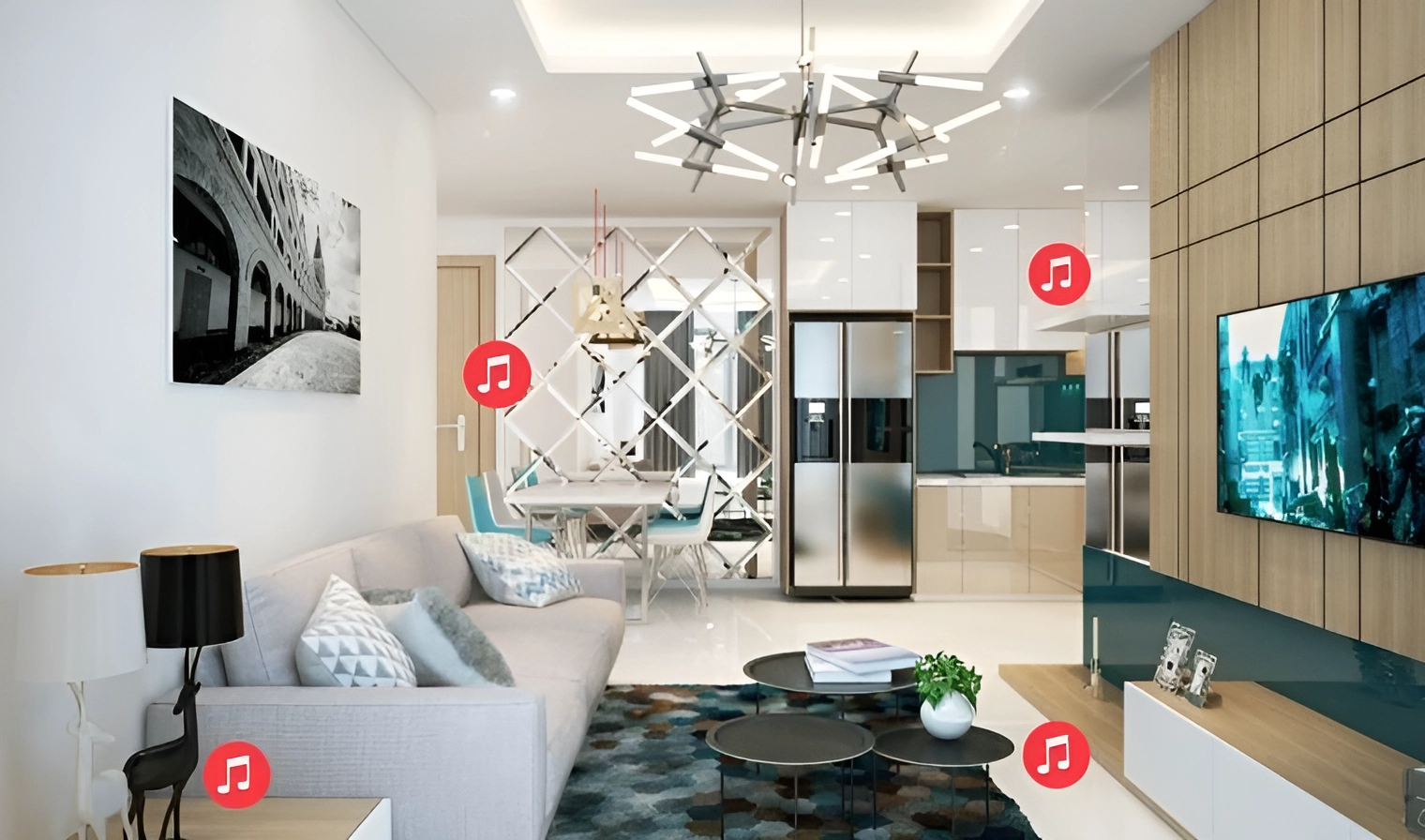
3.2. Multimedia entertainment image system:
Smart TV and Smart Projector:
- Connect to the internet via Wi-Fi or Ethernet cable, allowing access to a variety of online services and applications.
- Supports voice control, helping users search quickly and easily.
- Supports screen sharing from mobile phones or tablets to display content directly on the big screen.
- Integrates artificial intelligence to optimize user experience, such as content recommendations based on viewing history.
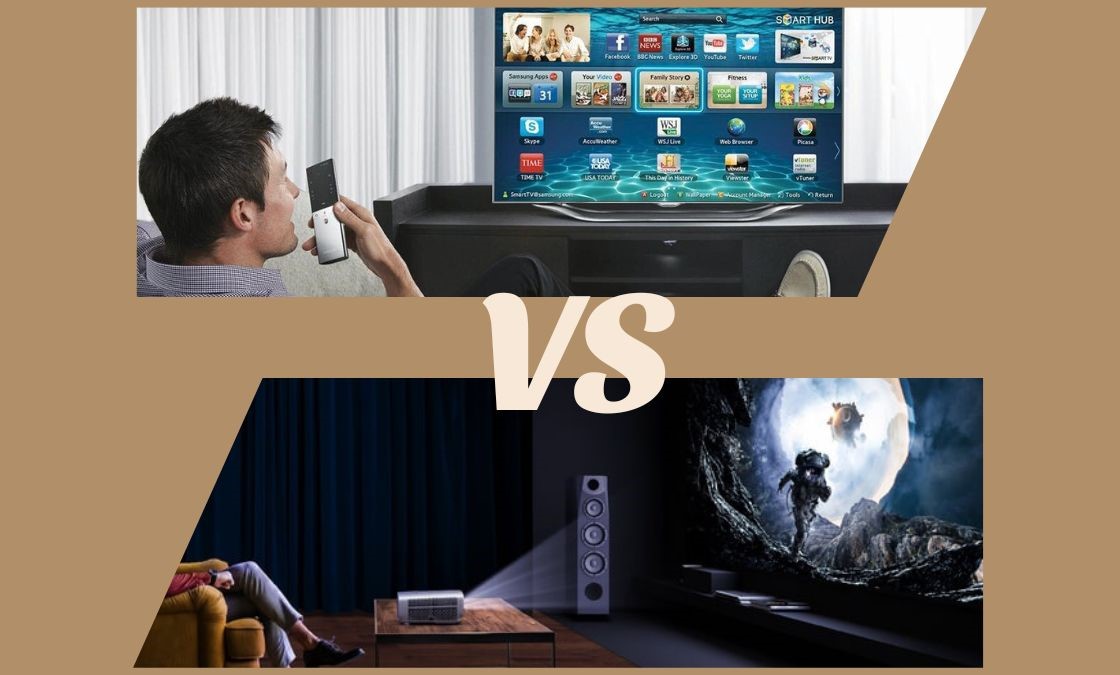
4. Summary of popular functions of Smart Homes:
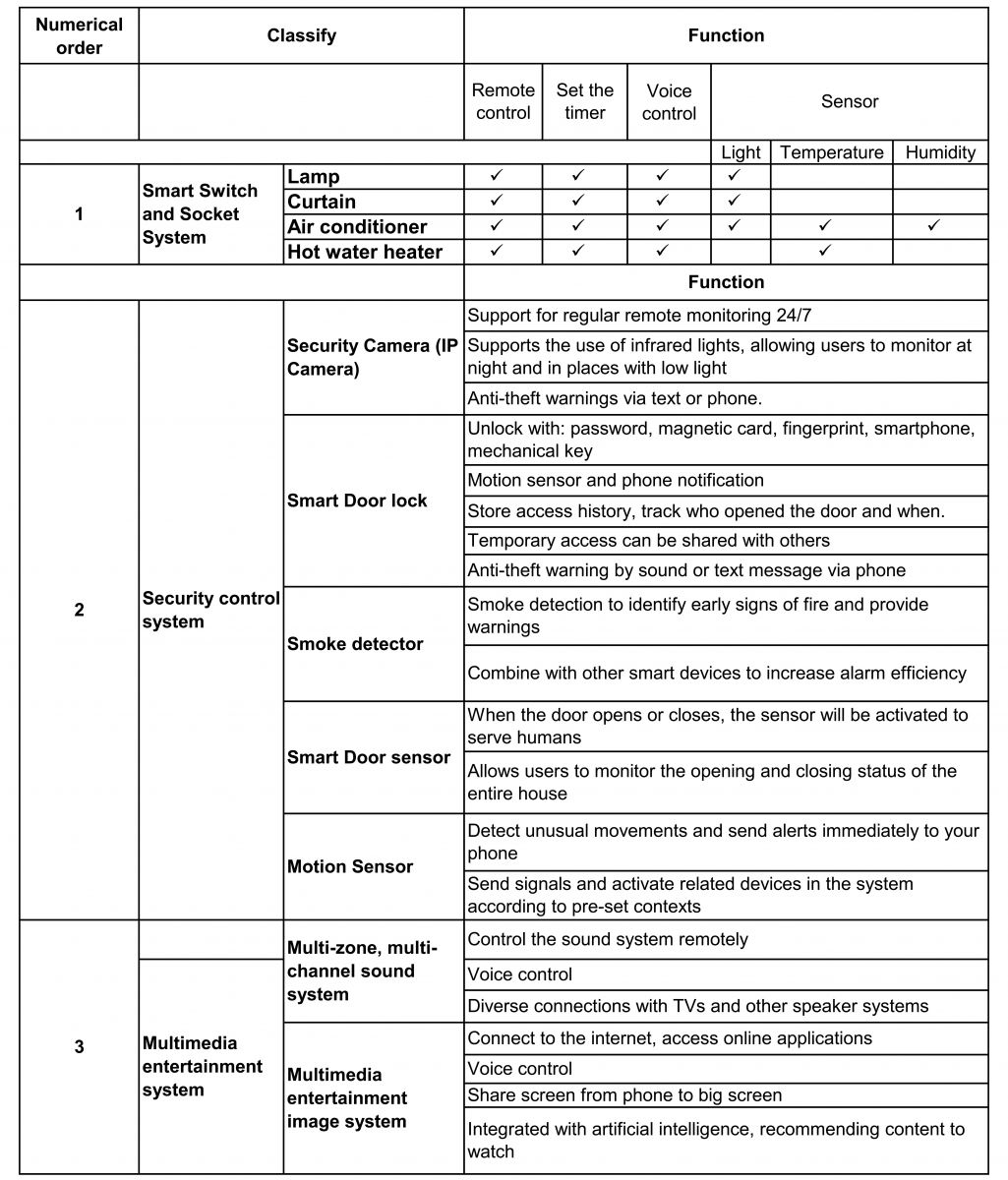
IV. Typical advantages and disadvantages of Smart Home systems:
1. Advantages:
Utilities and Convenient:
- Automation: Helps reduce effort and save time through automating tasks such as controlling lighting, temperature, and security.
- Remote control: Provides the ability to control and monitor your home anywhere with an internet connection.
Energy saving:
- Energy management: Optimize energy use through automatically adjusting lighting, temperature, and other energy consuming devices.
- Smart sensors: Use sensors to evaluate the environment and adjust devices to save energy.
Security and Privacy:
- Surveillance system: Provides a smart security system with cameras, sensors and timely notifications.
- Smart alarm: The system has the ability to warn users about incidents or security risks.
- Access management: Ability to manage who has access and control over devices in the home.
- End-to-end encryption: Smarthome devices such as Switches, Smart Sockets, IP cameras, sensors and other devices are encrypted end-to-end with devices such as Smartphones or Central Controllers to help prevent Block unauthorized access from outside, while limiting other risks related to system information security.
High Aesthetics:
- Integrated design: Smart devices are designed to integrate or hide subtly in the living space, creating a modern and classy space.
- Diversity of choices: There are many products with diverse designs, suitable for many styles and personal preferences.
- High quality constituting materials: The materials constituting the Smarthome device product, in addition to having an aesthetic and beautiful design, must also be mentioned that the materials used to make them are finished at a high and premium level such as: Solid metal, Tempered glass, Powder coating, ...
2. Disadvantages:
High installation and maintenance costs:
- Large initial investment costs: Smart Home devices and systems often have high initial installation costs, especially when wanting to perform a comprehensive installation.
- Maintenance and repairs: Maintenance and repair costs can also be high, especially if complex technical problems need to be repaired.
Security Issues:
- Risk of hacking and intrusion: Smart Home systems can become a target for hackers, posing risks of intrusion and theft of personal information.
- Security holes: If a strict information security system is not built by manufacturers and genuine distributors, smart devices may have security holes, posing a high risk to users. user privacy and safety.
User Skills:
- Complicated usage: Installing and using some smart devices can be complicated, especially for the elderly or people who are not in the habit of using smart devices. technology understanding.
Depends on Technology:
- Risk of loss of connection: Smart Home systems often depend on WiFi and Bluetooth networks, and if there is a problem with the network, it can cause loss of connection and affect the operation of smart devices.
- Potential instability: If the network is unstable, reliance on it can create an inconsistent experience for users.
V. Future development trends of Smart Homes:
With the strong development of technology, it can be seen that in the near future, Smart Home technology will certainly continue to develop, overcome shortcomings and promise to bring many features and conveniences. New, more useful and unique benefits. Below are some future development trends of Smart Home predicted:
1. Integrating Smart devices:
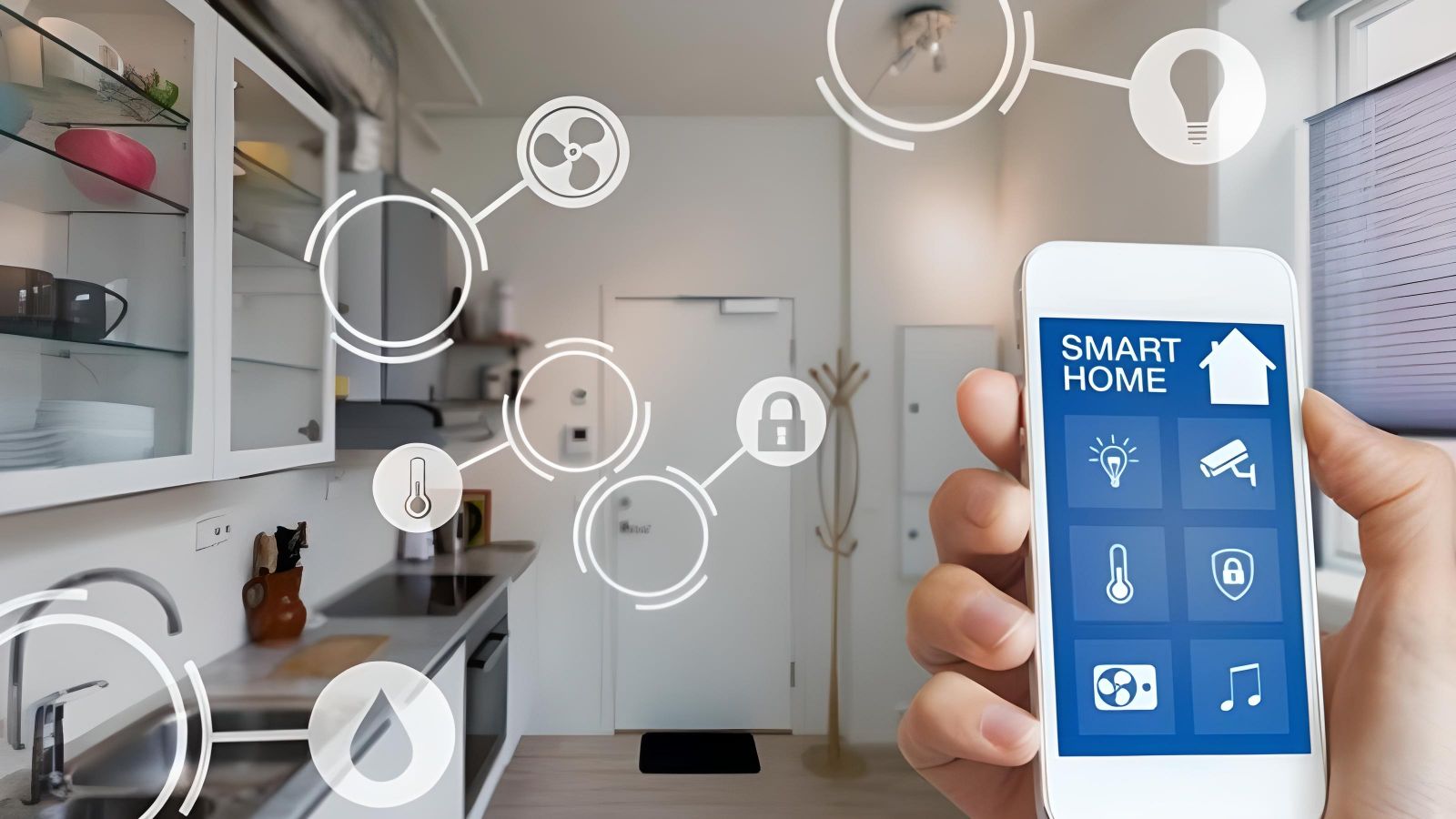
Smart Home systems are increasingly focused on providing smart devices that can integrate and expand with many different devices. This integration provides increased utility because smart devices can collaborate with each other, working as a team to deliver new features and useful information to users.
2. Enhanced Security on devices:
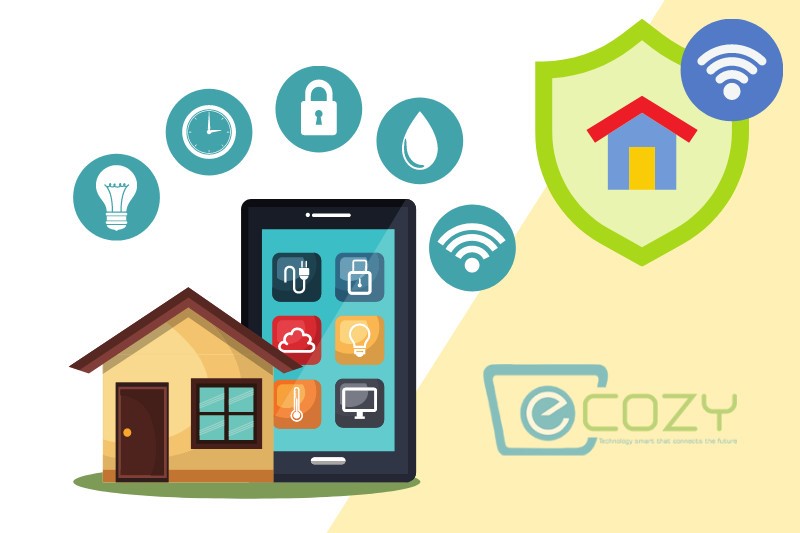
Smart home technology has faced privacy data breach issues. Therefore, to better meet the demands of today's consumers, encryption technology and advanced security measures will be integrated to ensure that all users' information and private lives are safe.
3. Save Energy to create a save Environment:
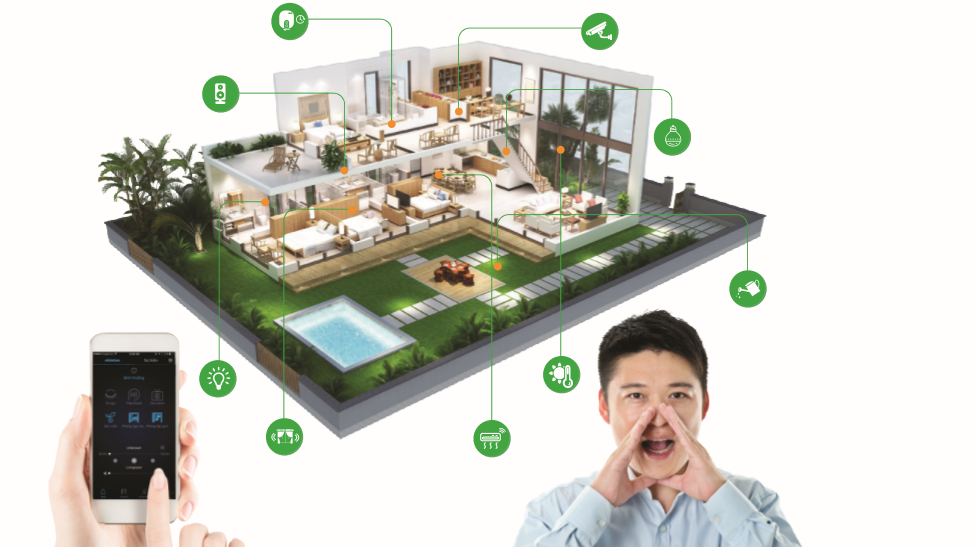 In the future, the development trend of Smart Home systems will be towards automatically managing energy in the home, creating a convenient and sustainable living environment. The integration of renewable energy solutions and smart management will be prioritized to help minimize dependence on traditional energy sources and reduce greenhouse gas emissions into the environment.
In the future, the development trend of Smart Home systems will be towards automatically managing energy in the home, creating a convenient and sustainable living environment. The integration of renewable energy solutions and smart management will be prioritized to help minimize dependence on traditional energy sources and reduce greenhouse gas emissions into the environment.
VI. Some reputable Smart Home system brands on the market:
1. LUMI Smart Home:
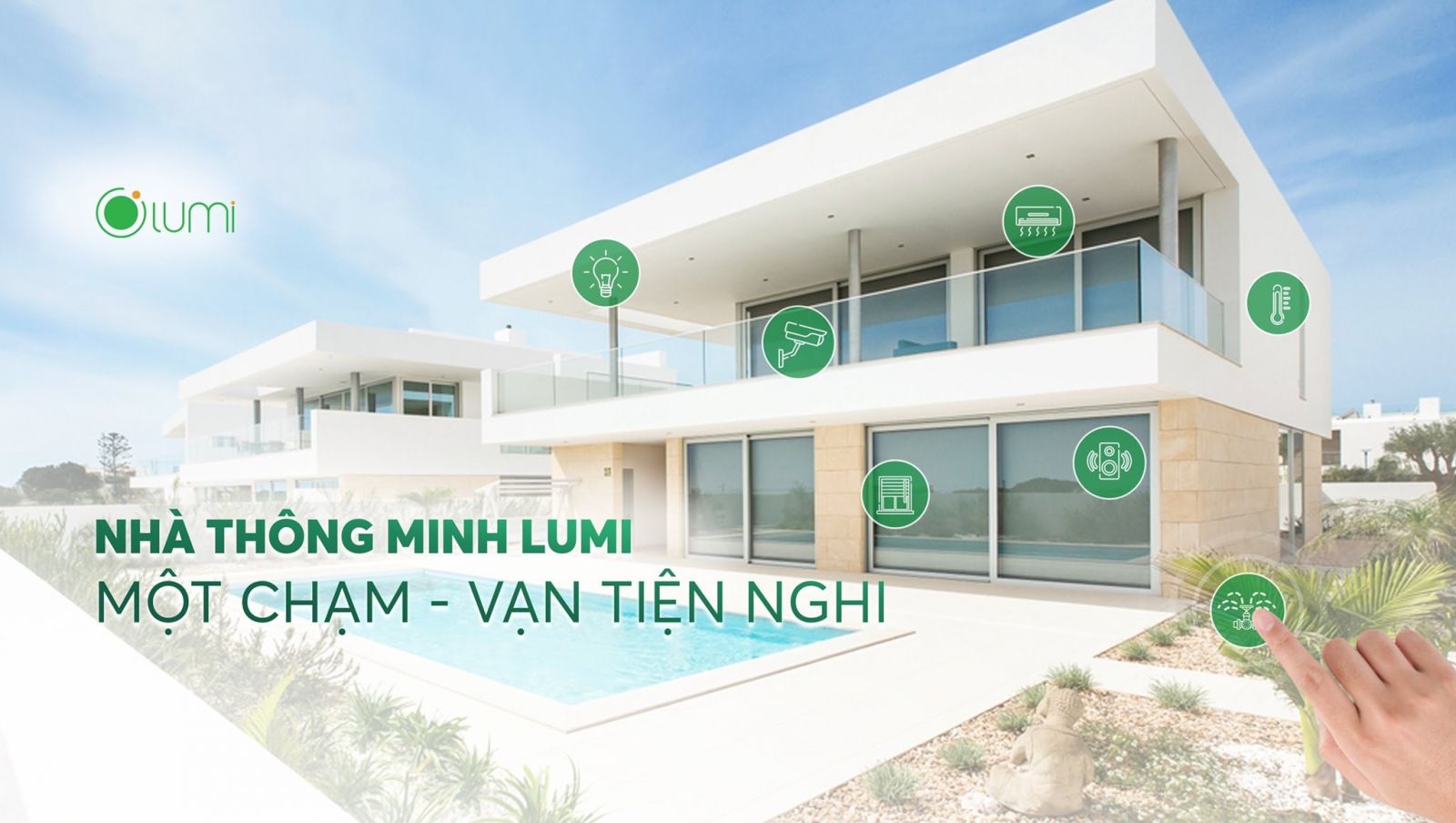
As one of the oldest Smarthome brands in Vietnam, Lumi is famous for its smart control solutions based on mobile phone platforms. Lumi is favored by users thanks to its easy-to-use features, modern design and wide compatibility with many other devices.
Pros:
- Easy-to-use, user-friendly application interface
- Integrates many smart features and support services
- Modern and luxurious product design
- Security system guaranteed with cloud encryption
Cons:
- Product price is quite high
- Requires a good network system for stable operation
Here are some outstanding products of the Smart Home Lumi brand:
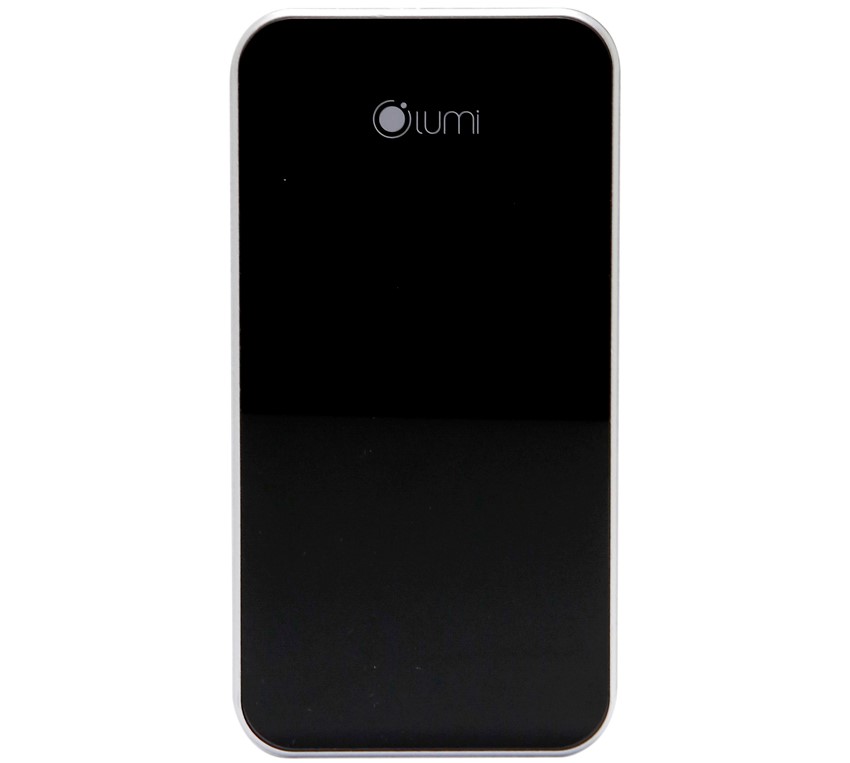
Luto central controller
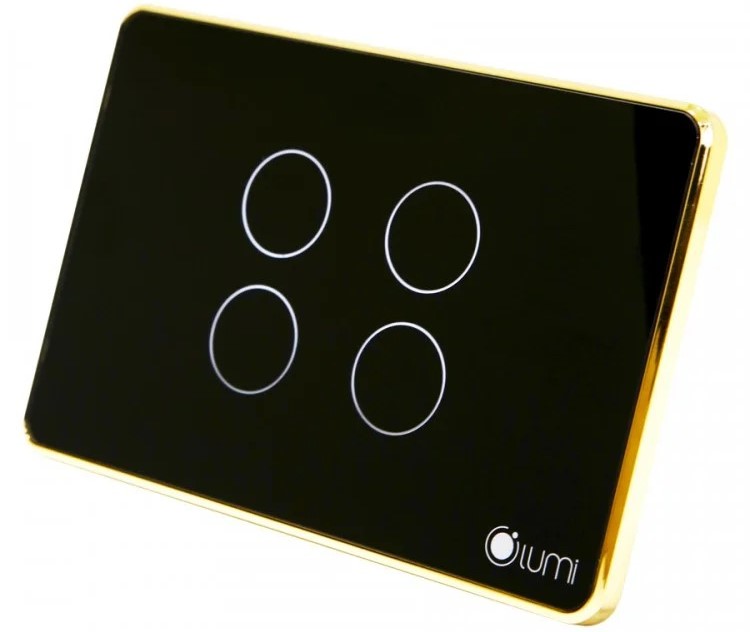
Luto touch smart switch
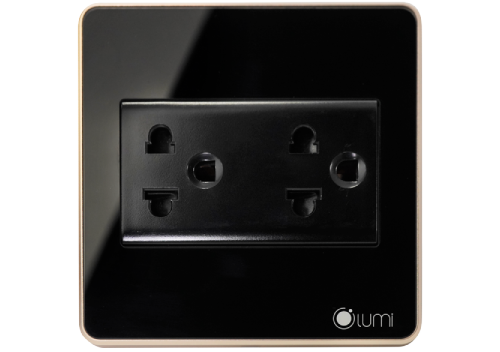 Luso network socket
Luso network socket
2. FPT Smart Home:
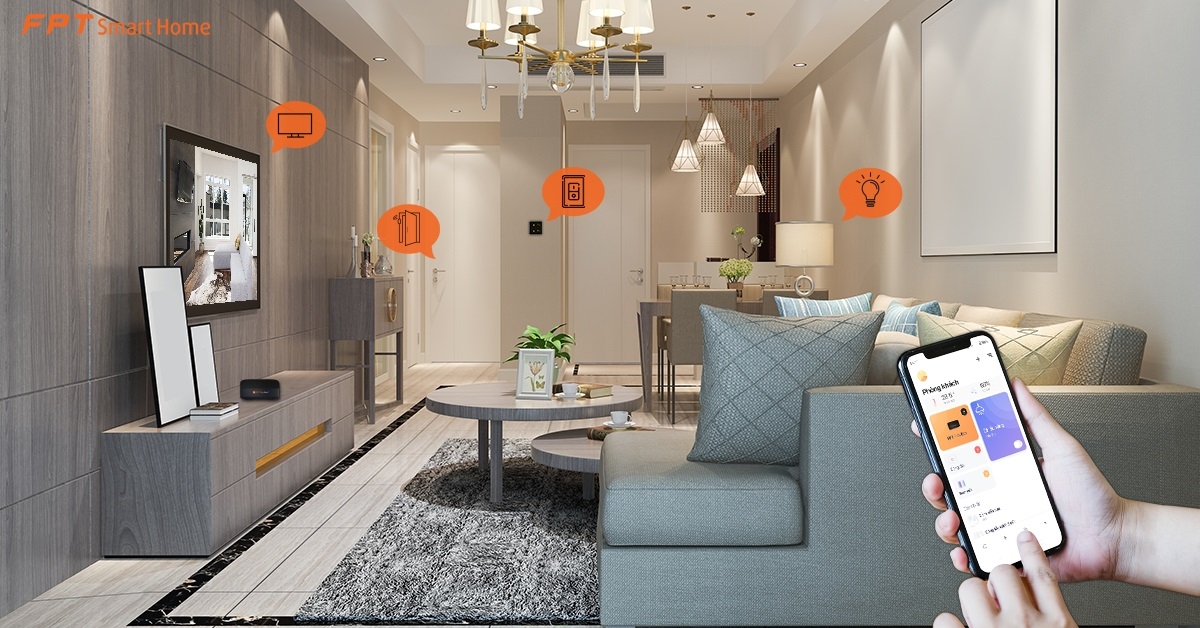
As a product of FPT technology company, providing comprehensive smart home solutions from security, lighting to electrical equipment control. FPT Smarthome is highly appreciated for its product quality and customer support services.
Pros:
- Diverse product system, suitable for many different needs
- Product quality meets international standards
- Professional and fast customer support service
- Integrates cloud technology, making management and control easy
Cons:
- Product prices are higher than some other brands
- Requires a good network system for stable operation
Here are some outstanding products of the Smart Home FPT brand:
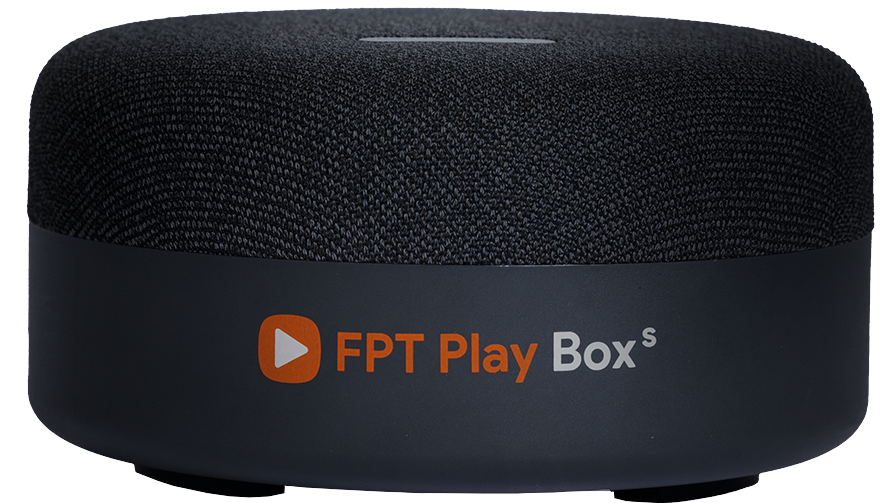
FPT Smart Home central controller
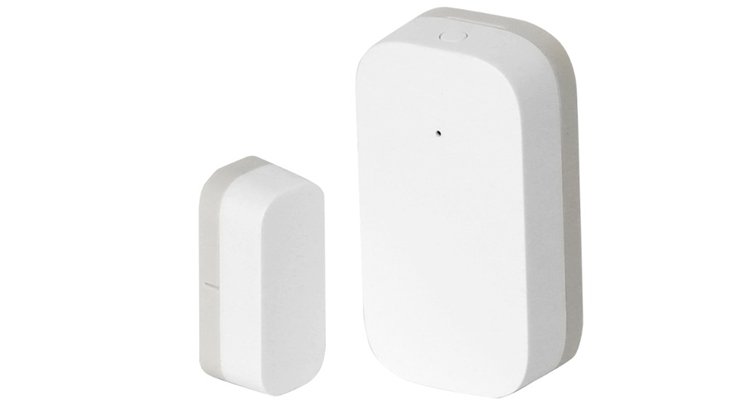
Door sensor of FPT Smart Home
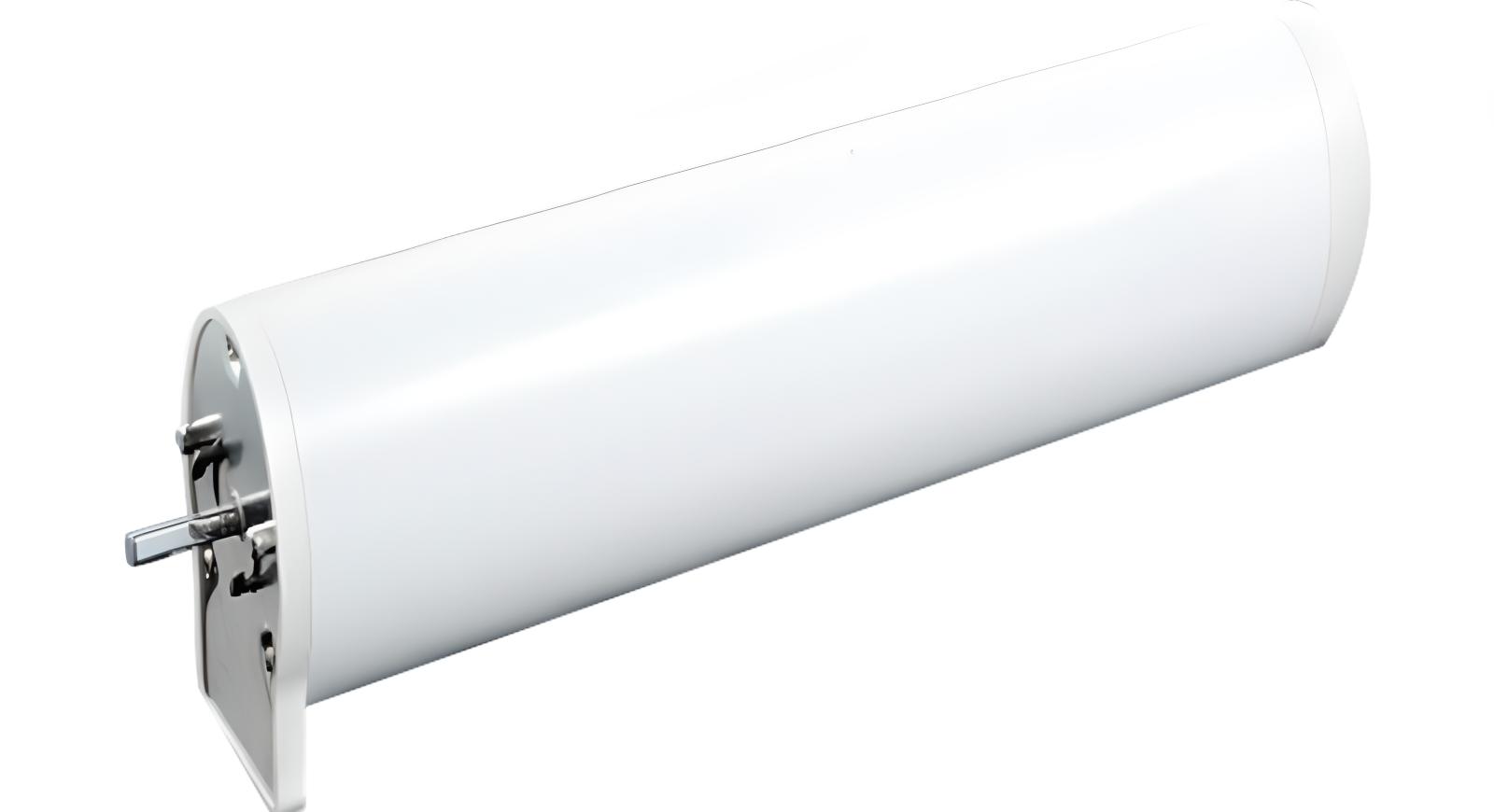
FPT Smart Home Smart curtain motor
3. Rang Dong Smart Home:
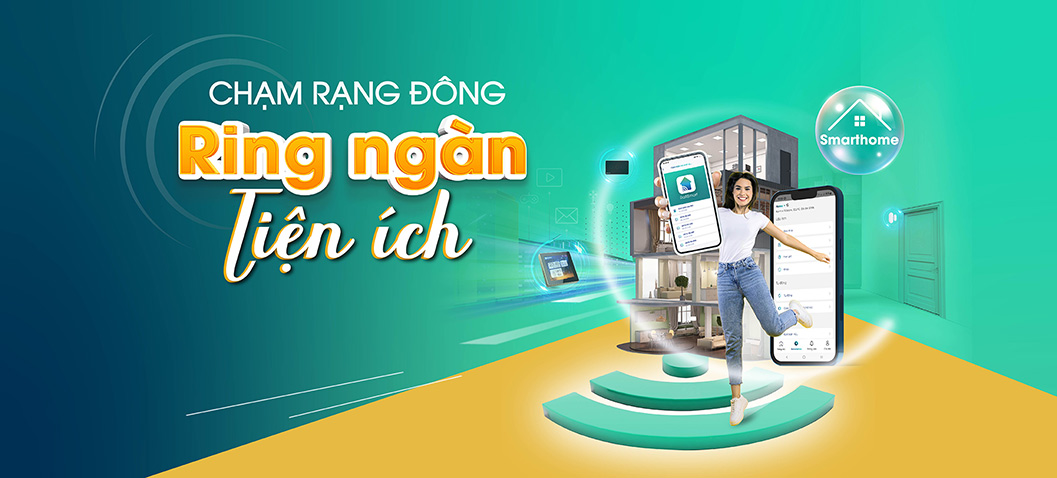
Rang Dong is a Smart Home brand Made in Vietnam, providing security, lighting and control solutions for home electrical equipment. Rang Dong is highly appreciated for its product quality, affordable prices and good support service.
Pros:
- Quality products, ensuring durability and performance
- Affordable and reasonable prices compared to quality
- Enthusiastic and dedicated customer support service
- Integrates popular smart features such as remote control and activity scheduling
Cons:
- The number of smart home solutions is limited compared to larger brands
- Needs time to develop and update new features
Here are some outstanding products of the Rang Dong Smart Home brand:
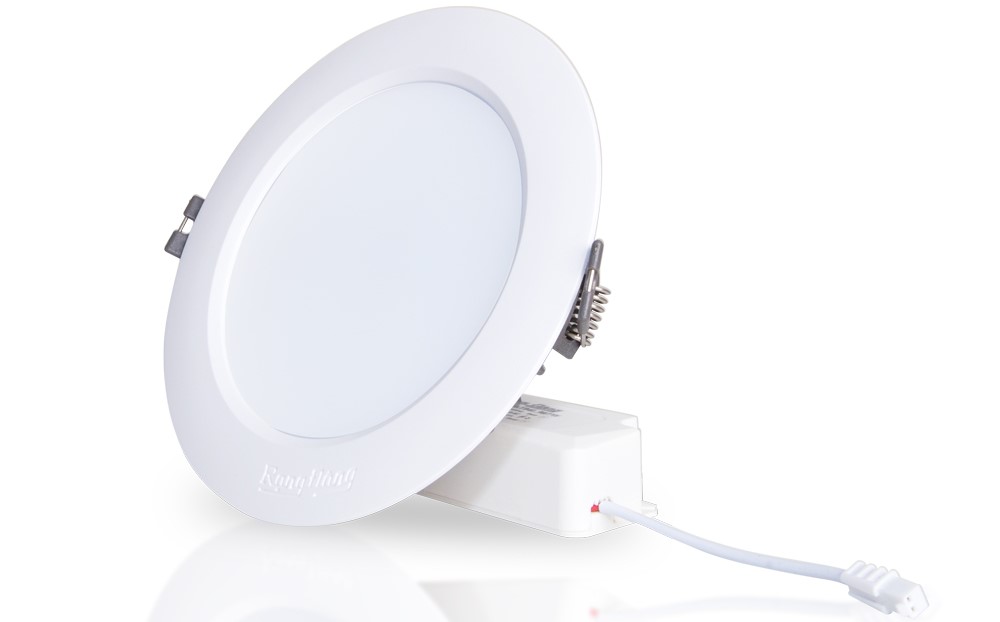
Rang Dong LED ceiling downlight
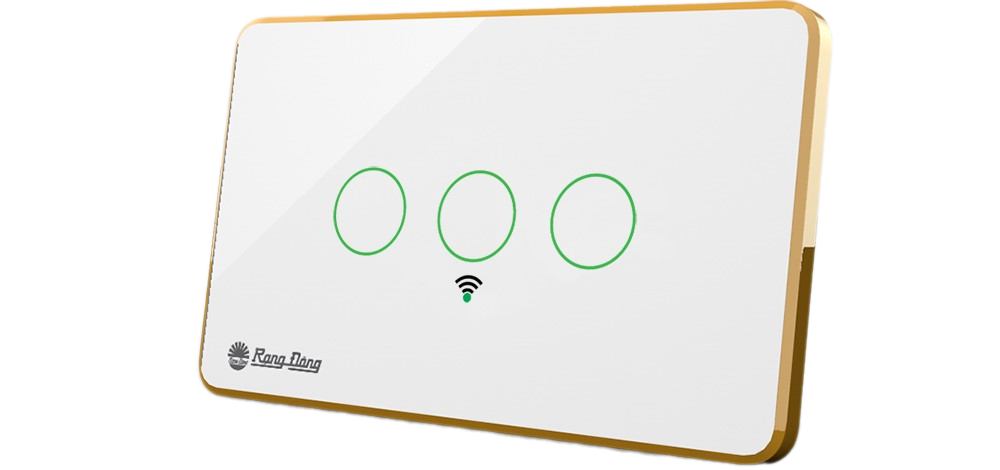
Rang Dong Wifi touch switch
Nowadays, Smart Home is not only a trend but also a symbol of modern life. The convenience, safety and efficiency that Smart Home brings, has created a unique and convenient living experience for users. Above is the useful information that JDesign Co., LTD provides about "Smart Home in the 4.0 era". Hopefully this article will help you better understand Smart Homes as well as gain more insight into how technology can turn your Home, Office, Space into a modern and classy living space.
JDesign Co., LTD is proud of being a professional Interior Design and Construction Company. We are confident to always bring to our customers the complete Interior Design and Construction solution with the best designs and the latest trends, besides the quality of completing the Project with the most reasonable time. with the most economic cost, always accompanied by the condition of product maintenance support during and after the best project handover time to customers!
-----------------------------------------------------
JDesign Co., LTD - PROVIDE PACKAGE SOLUTION RELATED TO INTERIOR DESIGN AND CONSTRUCTION!
Contact us now to schedule a Free Consultation/Survey/Quote!
Product warranty up to 03 years – Commitment to product maintenance for life!
For more details please contact:
- Email: contact.jdesignvn@gmail.com
- Tel: (+84) 866.648.298
- Website: https://j-design.vn/
- Fanpage: https://www.facebook.com/jdesignvn
- Corporate Office: 03/50 Nguy Nhu Kon Tum, Nhan Chinh, Thanh Xuan, Ha Noi
JDesign - Your Inspiration. Our Creation!
#jdesignvn #interior #interiordesign #interiordecor #smarthome #modern




